Sustainable Mindsets


What is changing and how is the world thinking about sustainable consumption?




















What is changing and how is the world thinking about sustainable consumption?

















We are living in an unprecedented time period. It is marked not only by the pressing need to transition to a sustainable society, but also by mounting geopolitical tensions and an aging population. All this while digitalization keeps accelerating and changing the way we work, live and think. This growing complexity is but a feature of the transformation that awaits us. In light of all this, individuals often encounter a sense of confusion at what their role is in this societal shift.
In Chapter 2, we reflect on three main shifts that influence consumers:
z From order to chaotic complexity: New concepts and technologies are adding a layer of complexity to everything. More things have to be measured, while global tensions and uncertainties are making change risky. An emerging legal landscape is forcing companies to do better. There is no overarching legal framework at a global level, however, which complicates matters. We are also taking our first steps towards a circular economy, which is leading us into a new paradigm of consumption.
z From anonymity to trust and transparency: New tools and channels enable both consumers and producers to better track information about products. In a more complex world, we are demanding that the technology gets put to good use. We want more insight into everything, because everything is better when there is trust.
z From profit driven to purpose driven: In a world of inequalities and mental health issues, we are spending more time thinking about how we and people around us can feel better. We are also beginning to fundamentally question a world where carbon emissions are still rising,despite the efforts of some to keep them down. Profit can no longer be the only metric – we must take humans and nature into the equation.
Chapter 3 presents the results of an AI-guided analysis of articles related to sustainable consumption in international news media. The aim of the analysis was to identify different topics and mindsets that exist
in relation to sustainable consumption. A key observation is that conversations in this field take a number of different starting points. While a strong focus on consumption choices by individual consumers prevails in Europe, discussions may also start from security considerations, scarcity, a sense of belonging, or questions about who is responsible for driving sustainable transformation. After noting topics that are prominent in different geographic regions, we move on to explore seven recurring themes. The themes touch upon consumer behaviour, business models, and technical solutions to sustainability challenges – but also on thrift as a sustainable virtue, divergent ideas about what ‘local’ means in the context of sustainable consumption, and points where different conceptions of sustainability are at odds with one another. A striking observation is that, although we all appear to like the idea of sustainability, we do not always have a shared understanding of what it means.
Chapter 4 revisits the Sustainability Stairway, a conceptual model we introduced in our report on sustainable consumption in 2019 with the aim of visualizing how consumers differ when it comes to attitudes to and knowledge about sustainability. The process of becoming a more sustainable consumer can be thought of as a journey up the stairway: from not being interested in sustainability at all at the bottom of the stairway, via (at the first step) adopting specific sustainable practices that do not require major sacrifices, to (at the second step) more thoroughly adjusting one’s life in a sustainable direction. In this update, we look at each of the steps in the light of recent academic research findings. We also add a third step to the stairway model. This is where we find the engaged sustainability community leaders – people who are actively spreading their sustainability engagement to others. Chapter 4 additionally adopts the perspective of a consumer-facing business that wants to offer its customers sustainable value propositions and presents a suggestion for how the Sustainability Stairway can be used in combination with Science Park Borås’ Circular Business Model Canvas.
Vi lever i en unik tid Den utmärks inte bara av ett akut behov av att ställa om till ett hållbart samhälle, utan också av ökade geopolitiska spänningar och en åldrande befolkning Samtidigt påverkar digitaliseringen i allt större utsträckning hur vi arbetar, tänker och beter oss Den tilltagande komplexiteten är bara en sida av den omställning vi står inför. I ljuset av allt detta är det många som känner sig förvirrande kring vilken deras roll i samhällsomställningen egentligen är.
I kapitel 2 beskriver vi tre stora skiften i den värld som konsumenter lever i:
z Från ordning till kaotisk komplexitet: Nya koncept och ny teknik gör det mesta ännu mer komplicerat. Fler saker måste mätas, samtidigt som globala spänningar och osäkerheter gör förändringar riskabla. Ett framväxande rättsligt landskap tvingar företagen att göra bättre ifrån sig. Det finns dock ingen övergripande rättslig ram på global nivå, vilket komplicerar saken. Vi tar också våra första steg mot en cirkulär ekonomi, vilket leder oss in i ett nytt konsumtionsparadigm.
z Från anonymitet till tillit och transparens: Nya verktyg och kanaler låter både konsumenter och producenter följa information om produkter. I en alltmer komplex värld kräver vi helt enkelt mer från denna teknik och att den används för något gott. Vi vill få inblick i allt, eftersom tillit gör allting bättre.
z Från vinstdrivet till syftesdrivet: I en värld där såväl ojämlikhet som psykisk ohälsa är utbredd ägnar vi alltmer tid åt att fundera över hur vi själva och människor omkring oss kan må bättre. Vi börjar också att i grunden ifrågasätta en världsordning där koldioxidutsläppen fortsätter att öka, trots somligas ansträngningar för att hålla dem nere. Vinst kan inte längre vara det enda som räknas – vi måste också få in människor och natur i ekvationen.
Kapitel 3 presenterar resultatet av en AI-stödd analys av artiklar som tar upp hållbarhet kopplat till konsumtion i internationella nyhetsmedier. Analysen syftade till att identifiera både olika ämnen och olika sätt att tänka på detta område. En central observation
är att man i stor utsträckning utgår från olika saker: Ett tydligt fokus på individers konsumtionsval dominerar i Europa, men resonemang på området kan lika gärna ta sin utgångspunkt i säkerhet, brist, tillhörighet eller frågor om vem som bär ansvaret för att driva hållbar omställning Efter att ha noterat ämnen som sticker ut i olika delar av världen vänder vi vår uppmärksamhet mot sju teman som återkommer i textmaterialet Dessa berör konsumentbeteende, affärsmodeller och tekniska lösningar på hållbarhetsutmaningar – men också sparsamhet som dygd för hållbarhet, skiftande idéer om vad ”lokalt” betyder i sammanhanget hållbar konsumtion samt punkter där olika föreställningar om hållbarhet ser ut att befinna sig på kollisionskurs med varandra. Trots att vi alla tycks gilla hållbarhet är det slående att vi inte alltid är överens om vad det innebär.
I kapitel 4 återvänder vi till Hållbarhetstrappan, en modell vi introducerade i 2019 års rapport om hållbar konsumtion Modellens syfte är att illustrera hur konsumenter skiljer sig åt vad gäller både inställning till ochkunskapomhållbarhet.Attantamerhållbarakonsumtionsbeteenden kan symboliseras av en vandring uppför Hållbarhetstrappan:från att inte alls bry sig om hållbarhet, via att (på första trappsteget) göra enskilda hållbara val som inte kräver några större uppoffringar, till att (på andra steget) ställa om sitt liv i grunden. I denna uppdatering betraktar vi de olika trappstegen i ljuset av färska insikter från forskarvärlden. Vi bygger också på trappan med ett tredje trappsteg,där vi hittar engagerade sustainabilitycommunityleaders– människor som aktivt sprider sitt hållbarhetsengagemang till andra I kapitel 4 ser vi också på hur ett företag som vill erbjuda hållbara värdeerbjudanden till konsumenter kan använda Hållbarhetstrappan tillsammans med den Circular Business Model Canvas som Science Park Borås tagit fram.
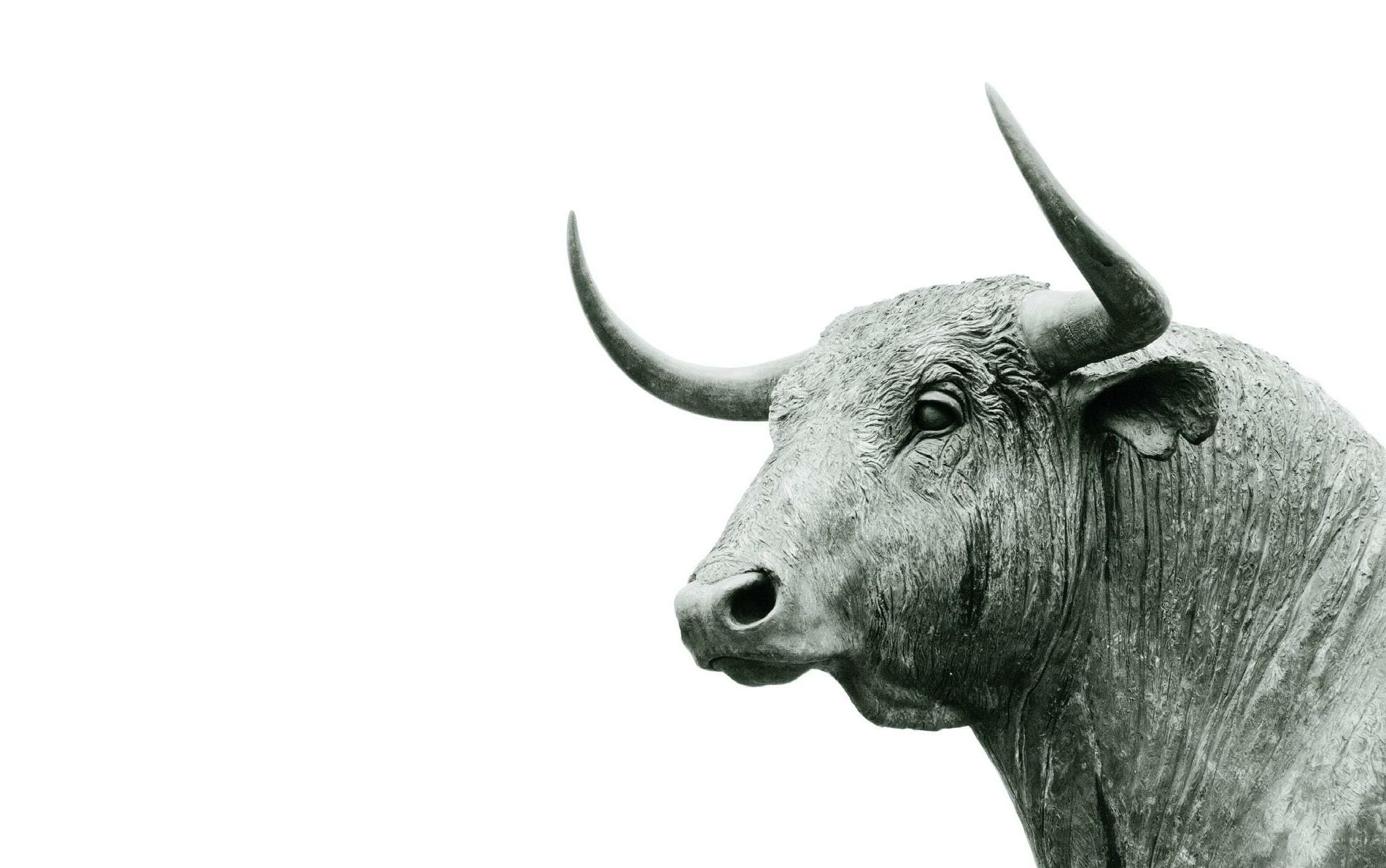

This report on sustainable consumption – Sustainable Mindsets –comes at a period in time in which we are experiencing a global reorganization, an accelerating climate crisis combined with mounting geopolitical tensions. Although the planetary impact of one human being today is larger than ever before, and although there is no lack of ideas about what needs to be done to turn the world onto a more sustainable track, individuals as well as businesses and political leaders are still reacting far more slowly than they would need to.
Science Park Borås, at the University of Borås, is a part of the innovation system in the Region Västra Götaland, located in Sweden. Science Park Borås hosts several national missions, among which the platform Textile and Fashion 2030 is the cornerstone of our national and international work. Together with private and public actors as well as the civil society, we support and encourage innovation and transformation. Our goal is to contribute to circular material processes and new circular and profitable business models. The driving forces are the United Nations Sustainability Development Goals, the pursuit of climate goals and the aim to reach economically, socially and ecologically sustainable societies. In the innovation processes, we combine technology, digitalisation and craftsmanship with new materials, behavior change and cultural movements.
The innovation system in the Region Västra Götaland creates favourable conditions for business and industry by investing in entrepreneurship, innovation and a skilled labour supply. Since 2019 Science Park Borås delivers unique knowledge about the demand perspective in a circular economy – in other words – sustainable consumption. To understand the business opportunities in the radically changing future of consumption, we have since 2019 presented reports on sustainable consumption. There are many processes needed at the same time. Some people need to increase their consumption, some people will have to decrease consumption to reduce their footprints and most of us need to change our consumption patterns. Business and industry, on the other hand, need to know when and in what way the consumers are ready for new sustainable products and services. The Sustainability Stairway, that was presented in 2019 and further developed in this report, illustrates how consumers differ when it comes to attitudes and knowledge in relation to sustainability. The current 2022 report aims to assist businesses in using the stairway model, in particular when developing sustainable value propositions targeting different consumers.
The ongoing public debate on sustainability and circular economy often has a Western European perspective on both challenges and solutions. To avoid a narrow European perspective on sustainability and consumption, this report explores related public discourse globally. An AI-guided analysis is used, based on news articles from around the world, to give an overview of contrasting mindsets.
Participation of consumers as well as businesses and political leaders will be necessary for a collective sustainable transformation. Our hope is that the report will be a valuable contribution as new steps are taken towards circular business models and sustainability.
Birgitta Losman strategist Science Park Borås Erik Bresky CEO Science Park BoråsThis report on sustainable consumption comes at a period in time in which we are experiencing a historical global reorganization: the climate crisis is accelerating, while at the same time we see mounting geopolitical tensions and ageing populations in many parts of the world.
A new generation of people has grown up aware of the various environmental challenges that have been affecting the planet since the 1970s, and particularly since the 2000s. More than ever, the demand for responsible action towards the planet and people is seeping through markets, politics and civil society as the reports by the International Panel on Climate Change (IPCC) are getting all the more alarming. Although the relative planetary impact (and thus power) of one human being today is larger than ever before, and although there is no lack of ideas about what needs to be done to turn the world onto a more sustainable track, individuals as well as businesses and political leaders are still reacting far more slowly than they would need to.
From a consumer perspective, it can be difficult to know how to act so as not to aggravate the crisis through one’s consumption. Part of the reason may be that a high level of complexity means that it is often difficult to see what one can do to make a positive impact as a consumer. This is not made easier by the fact that there are many different ideas about what responsibility lies on the individual consumer (in relation to, for example, corporations and governments). However, most would probably agree that the participation of consumers as well as businesses and political leaders will be necessary for a collective sustainable transformation.
Discussions about sustainability in relation to consumption seem to get even more complex than they would need to be as talking past one another is not a rare occurrence in these debates. Everyone seems to agree that sustainability is something good and desirable – at least in theory – but, at the same time, everyone does not seem to refer to or focus on the same things when talking about it. This
may, for example, contribute to differences in what is prioritised in sustainability work. To some extent, perhaps this is natural and necessary given the multifaceted nature of sustainability, which covers a range of aspects of social, economic, and environmental considerations. Nonetheless, there should be a value in recognising the different perspectives, focal areas, and mindsets that coexist in public discourse around sustainability. This report attempts to contribute to that.
We get the impression that – in a highly simplified way –people discussing sustainable consumption tend to focus either on the consumer herself, or on the production of the goods and services which she consumes. (See Figure 1.) Moreover, discussions sometimes focus on some inner state of the consumer – for example that she has good mental health and a sound lifestyle, or that she is in contact with nature and rooted in local tradition and community. Other discussions, in contrast, focus on displaying a sustainable style and lifestyle (for example to inspire others). We also see referrals to consumer brands as sustainable. Yet other discussions focus on purchase choices and the conditions under which goods are produced. Together with the flows between consumers and producers, this is where topics related to circular economy can be found. To help consumers and producers navigate the complexity, monitoring and transparency initiatives can be seen as yet another focus area. We do not want to claim that some focal areas are correct whilst others are wrong – though it might be argued that some of the focal areas may steal attention from others that are more important in certain situations.

Different things that people appear to be talking about when they talk about sustainable consumption.
First, in Chapter 2 we look at some of the driving forces and external trends that shape expectations, demands and the general setting around the consumer. Though written from a Swedish horizon, the key objective of this section is to broadly understand where the world is going, a general direction we can expect to follow for the coming decade(s). One major trend that we are witnessing is a movement from individual to collective responsibility where all actors – governments, corporations, and individuals alike – are required to rethink fundamental ways of doing things.
In an attempt to avoid getting stuck with a narrow Swedish, European, or western perspective on sustainability and consumption, the report then explores related public discourse globally, using an AI-guided analysis based on 536,929 news articles from around the world. Results can be seen in Chapter 3, which gives an overview of what topics are prominent in which parts of the world and of contrasting mindsets that can be discerned through the texts.
In the report’s final chapter, we revisit the Sustainability Stairway (in Swedish ‘Hållbarhetstrappan’), a conceptual model we introduced in our 2019 report1 on sustainable consumption, which illustrates how consumers differ from one another when it comes to attitudes and knowledge in relation to sustainability. In Chapter 4 of this report, we present a version of the model that has been updated
based on recent academic research results in the field of sustainable consumption behaviour. The chapter also aims to assist businesses in using the stairway model, in particular when developing sustainable value propositions targeting different consumers.

All throughout the report, we also refer to interviews that were conducted with experts from different fields. Interviews were conducted with (in alphabetical order):
• Annegret Affolderbach Artist, cultural futurist and experiential designer & producer
• Mikhail Jordaan Industrial Innovation Director
• Ulrika Modéer
United Nations Assistant Secretary-General and Director of the Bureau of External Relations and Advocacy, UNDP
• Kata Nylén
Psychologist with a focus on organisational psychology and climate psychology
• Kaj Török Chief Sustainability Officer at MAX Burgers
• Anders Wijkman
Former member of the Swedish and European parliaments, honorary president of the Club of Rome
1 ”Möt framtidens hållbara konsumenter – En etnografisk studie av svenska mikrokulturer med fokus på hållbarhet”, Kairos Future & Science Park Borås, 2019.
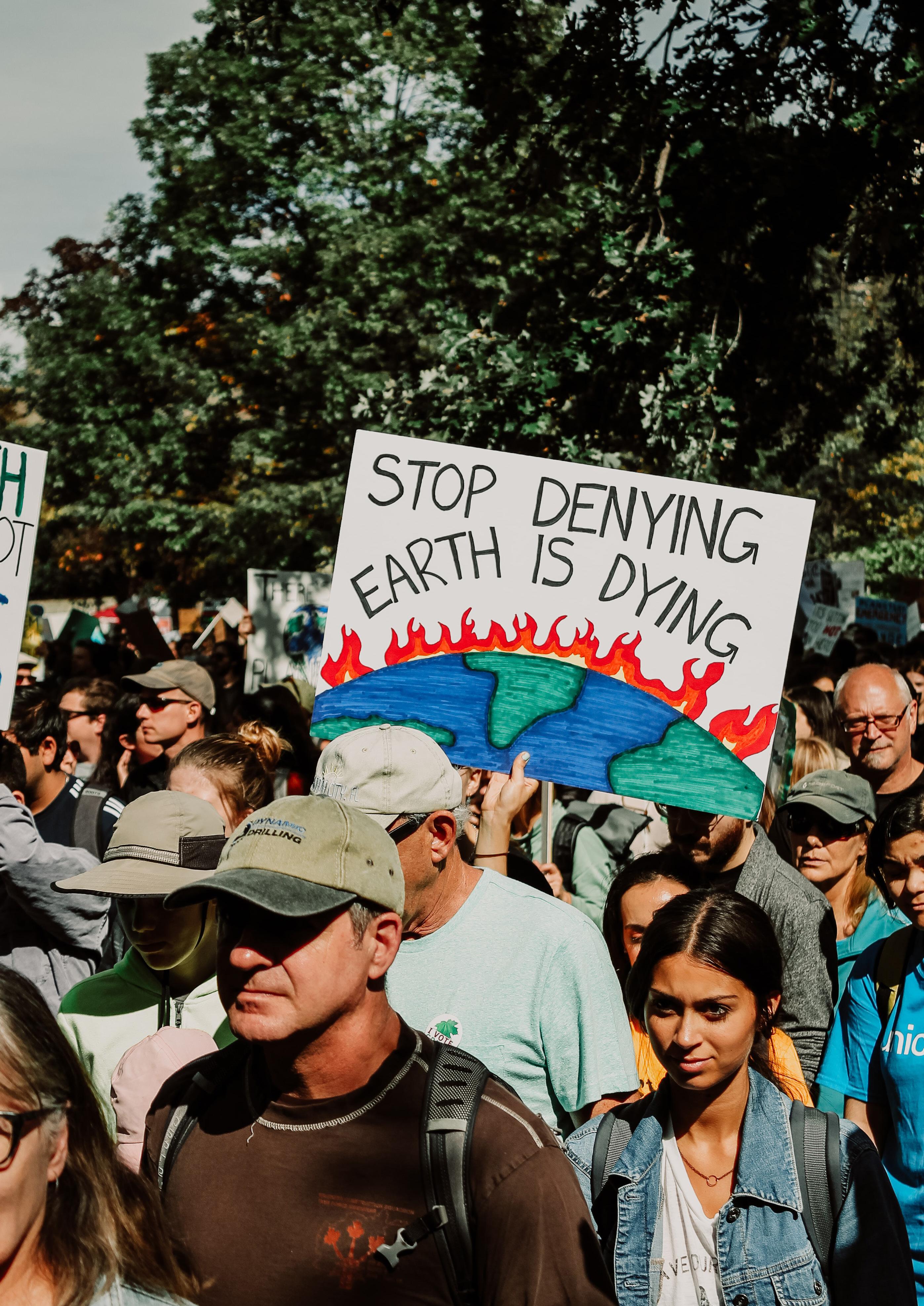
A key challenge for anyone who wants to help pushing consumption in a more sustainable direction is getting new practices to spread.
This means going from the minority of highly engaged consumers and activists to consumers in general, among which many are at most moderately engaged in sustainable transformation. One approach is to first target a smaller segment of consumers, who in turn may inspire others, who in their turn may inspire yet others, etcetera – until the majority of consumers are eventually onboard.

We can attempt to visualise this by using G. Moore’s model on innovation diffusion and adapt it to sustainable consumption. (Figure 3.) Such a model can help us think about what it would take for sustainable consumption to become a mainstream practice.
Using excessive meat consumption as an example of an unsustainable practice, the activists may be good at pointing out the issue, highlighting the problem of a lack of choice for consumers and raising awareness among people around them. However, as only a small minority of the population, the circles in which they can spread the idea is limited.
This is where the second group comes in. The people in this group have been made aware of the issue of unsustainable meat consumption – many of them thanks to the activists. They see an opportunity to mitigate the sustainability problem in a way that is financially viable, such as by introducing plant-based ‘meat’. They thereby create alternatives to the problematic consumption pattern identified by the activists (eating a lot of meat).
Moving into the mainstream requires that a broader part of the population is made aware of the problem and actively considers it a problem. Widespread awareness of a problem is not enough to change consumption behaviours, however, and there tends to be a chasm separating activists and visionary entrepreneurs from the general population. This is a problem, not least since mass adoption of more sustainable consumption will be necessary to mitigate climate change.
The visionary entrepreneur therefore needs to ensure that it is easy enough for a consumer to make a more sustainable choice, and that enough accessible information exists about relevant sustainability aspects of the alternative that they offer. Chapter 4 of this report contains a number of hints that entrepreneurs can keep in mind for that.

Another thing for activists and entrepreneurs to keep in mind is to focus on segments of the population who are more open than others to new ideas. During the interviews for this report, Kata Nylén and Kaj Török both emphasised that we should prioritise speaking to our friends, that is, to people who share a positive attitude towards the cause. Conservatives and sceptics are likely to follow later on, but they will not adopt a more sustainable consumption behaviour until after the early majority has already done so.
Lastly, synergies between activists (innovators) and entrepreneurs (early adopters) need to be carefully executed, as the language of activists must be used but also appeal to a broader audience, as well as connecting the movement to other overlapping causes. (See Enthoven & Thelken, 2022, and Section 4.2.4 in this report.)
Below are a set of trends that, at various system levels, influence the world around the sustainable consumer.This section is intended to be a zoom-out, to look outside the consumer’s own perspective and get a clearer picture of what is going in the world that will impact a person’s ability to make choices.The section is divided into 3 themes.
At the highest system level, new measures, concepts and technologies are adding a global layer of complexity to everything. New rules and means of competition are on the way.
A vast majority of Nordic consumers want to make more sustainable choices and believe we are heading for some form of disaster if we do not change and adapt our consumption habits, according the Nordic Swan Ecometer6. As more organizations develop climate targets and actions – which should in theory simplify the way to net zero emissions – the overall sustainability landscape seems to be becoming more complex, as more measurements, criteria and regulations are introduced.
According to Kairos Future’s surveys, only 24% of the Swedish population thinks Sweden's climate policy is good, indicating a degree of suspicion when it comes to the climate.
We also observe a lack of clarity about who is perceived to be driving the issues around a green transition: when we ask policymakers, most say that the public is the primary driving force. Conversely, when the public is asked, they report that experts, policymakers as well as the public are driving the transition (see Figure 5). This tells us that there is a persistent debate around who is responsible and who should drive the transition forward.
While a relatively large group is convinced that much of the responsibility must be taken by individuals, we are also seeing increasing pressure for more organizations to join in and take responsibility themselves, both in how they are governed and in what they offer (products, services, and processes). In the expert interviews that were conducted during the study, this issue emerged repeatedly. The general consensus among the experts was that the individual’s responsibility and agency is quite limited and that change at a systemic level is necessary, and increasingly effective at the legal level.
This inconsistency in perceived responsibility makes the issue difficult to manage and more complex. Although there is more agreement than before on where we are going, the road to get there is still complicated to say the least.
Demand for simplification, guidance and practical direction remains strong and is expected to grow, especially with quantifiable climate change impacts, including carbon footprints which is increasingly being measured with accuracy. Interest in services that motivate us to disrupt behaviour, for example through pre-programmed choices, is increasing and efforts by producers to develop smart and sustainable design are growing.
People drive change – according to policymakers. But according to people, the role of the public is perceived as being significantly lower. Who’s driving? There seems to be a responsibility gap to be addressed as to who should be leading the transformation.
Source: SveSamFram, Kairos Future, 2022.
The transition to a society with less impact on the environment and climate will take many years. What do you think will shape the transition in the coming years?
The engagement of people at large will mainly drive the transition
Both are equally important Experts and high-level decision-makers will mainly drive the transition
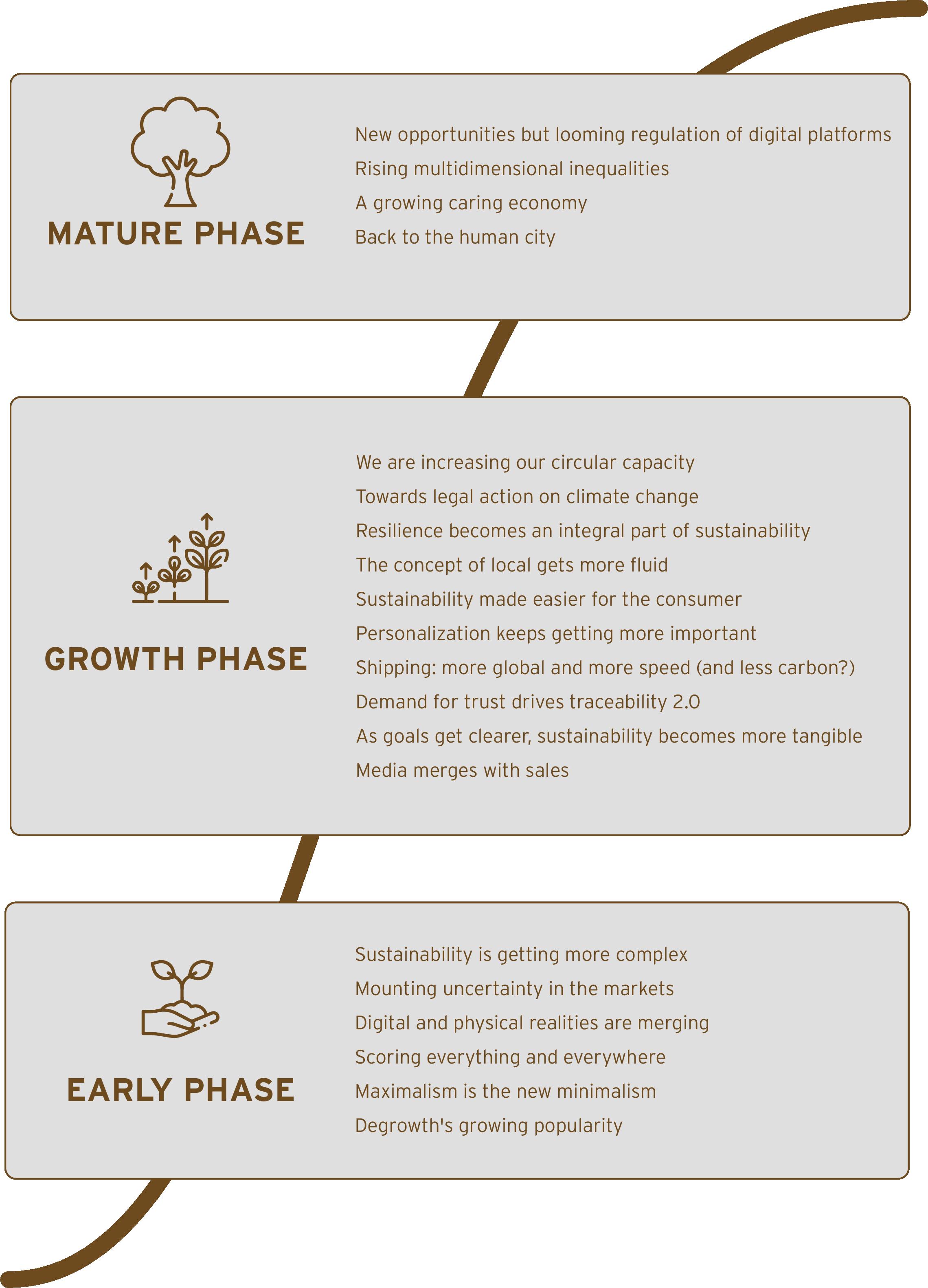
After a long period of stable economic growth, combined with the rapid recovery from the pandemic, markets have become increasingly cautious.
All the liquidity injected as pandemic funds from the world’s central banks is now over, resulting in global pressure to generate returns on investment. The Federal Reserve also recently signalled that they would be raising interest rates for the first time since year 2000 in the largest hike of the century. In addition, rising inflation is affecting consumers worldwide by rising prices and reducing purchasing power. Since the beginning of 2022, major global indexes are trending downwards (Figure 6).
Growing tensions between the US and China have already resulted in a weakening in free trade. Disrupted supply chains have demonstrated the vulnerability of the current system, and many countries have been seeking to reshore some of their strategic industries, such as microchip production. Uncertainty in the world, increased protectionism, automation, the prospects of climate neutral production and a narrowing wage gap have influenced Swedish industry to move back to Sweden.
Several developments – such as the rapid growth of cryptocurrency markets and the astonishing prices of Non-Fungible Tokens (NFTs) – are for many a sign of an economic bubble that is about to burst.
The pandemic and Russia’s invasion of Ukraine have both had a major impact on markets. The question now is not if, but when, the next pandemic or other disruptive event will
occur. While we are perhaps more attentive than ever to a so-called black swan event, our degree of preparedness is unclear.
This trend carries with it the potential to create new sustainability opportunities as a result of shorter production chains and more energy-efficient production, as well as more dynamic and resource-efficient production.
On the other hand, recessions are generally worse for sustainability, as consumer decisions are mainly made through financial decisions and other aspects become less important. Overall, the situation is giving off several indicators of a global recession, though this is difficult to ascertain.
Steady growth in the markets for the past 10 years as well as a swift recovery after the covid-19 crisis in 2020. The beginning of 2022 at the time of writing is marked by a significant downturn.
Extended reality is approaching a tipping point for mass adoption. For the first time, the technologies needed to make it possible are all coming together, such as energyefficient processors, better batteries, cloud solutions for machine learning, 5G and a growing access to community made apps. Meta, formerly Facebook, is leading the march in this area given that it accounts for the vast majority of all devices sold with its Oculus, mainly in virtual reality (VR).
Apple is also rumoured to release its first augmented reality (AR) device within the next few years, providing real competition in this new field. With the increasing popularization of the term ‘metaverse’ – the next generation of the internet that is supposed to be more immersive – interest in this area has grown. Meta is expected to develop a first version of it, along with several other players vying to become the de facto platform in the metaverse.
The development of cryptocurrencies and NFTs is also accelerating the ability to trade between virtual platforms. New ways to monetize platforms inspired from gaming logic are also impacting platforms. So-called ‘in-game purchases’ or ‘DLCs’ (downloadable content) are based on releasing platforms for free but selling personalization and additional content as the main source of revenue.
Different industries will use VR and AR differently, but those with a strong connection to physical objects can be expected to benefit from AR. Brands such as Nike, Ikea, Alibaba and Amazon are experimenting with this new information medium by letting customers visualize or even build products. In physical retail, phygital (physical +digital) stores offer the possibility of seamless experiences where users can pick up their shopping experience anywhere and whenever they want in even more situations that smartphones and tablets have allowed us to. Game developers like HVNT have started testing phygital games by building extended reality treasure hunts where you can win physical prizes, a market that Pokémon GO has been active in for a few years. Researchers have also suggested that VR may be a helpful medium for consumers to deepen their understanding of the complexities around sustainable consumption. (See Section 4.2.3.)
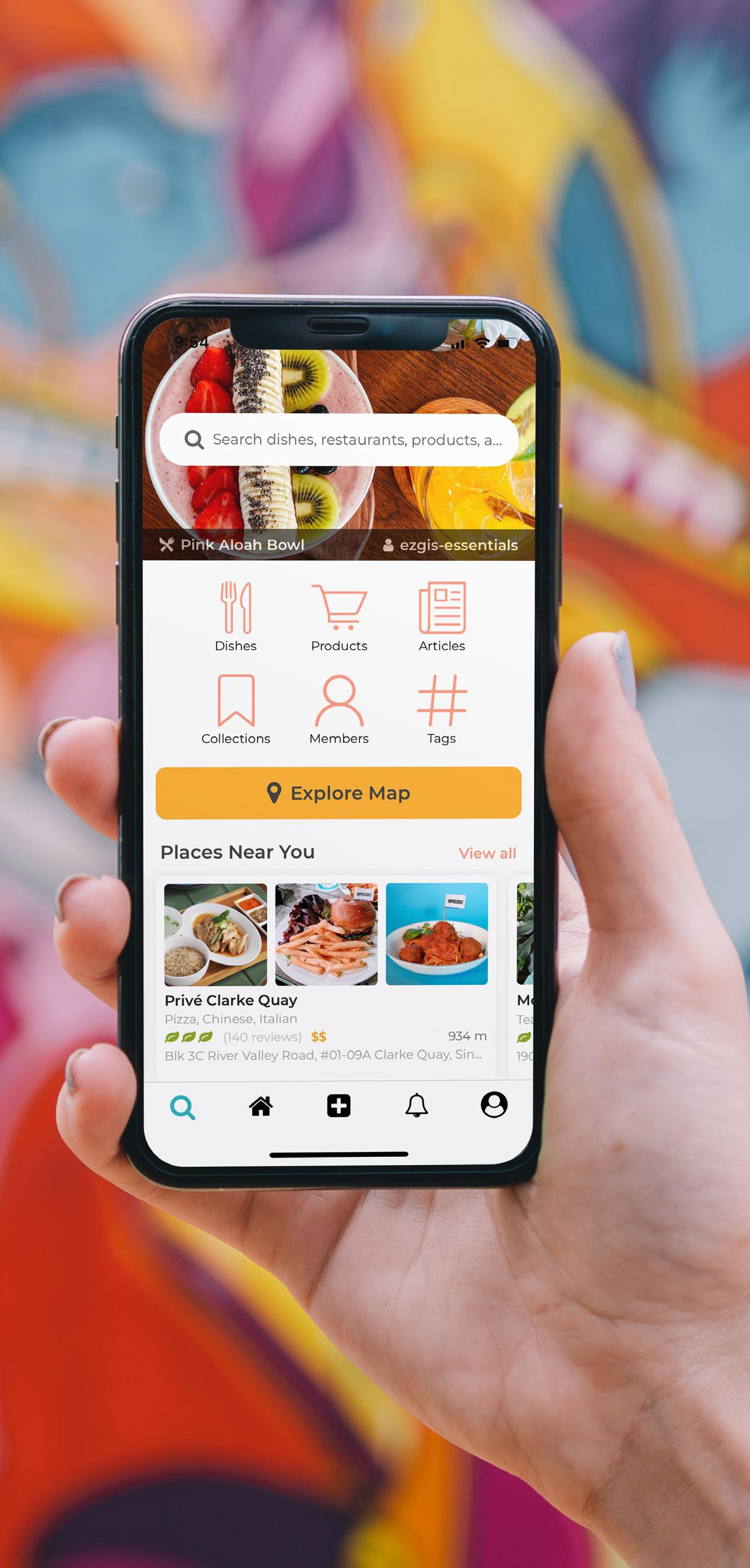
The number of legal cases against governments and corporations is increasing at a remarkable rate. While previously in the realm of the executive and legislative power, we are now seeing legal action taken around the world on the basis of climate science and targets. Companies and governments that are failing to meet their national targets are now being brought to court.

The 2015 Paris Agreement helped fuel this trend by setting clear governmental targets focused on keeping global temperatures well below 2°C over pre-industrial levels. Because the science in emission quantification is advancing, it is now possible to determine whether an organization’s own targets are compatible with the broader Paris framework. This trend will likely keep growing as more and more countries are making the agreement into national laws and the quality of climate modelling improves further.
Many cases worldwide have set intriguing precedents for what we can expect in the coming future. In Poland, an environmental organization was able to successfully prevent an energy company from building another coal power plant, which will likely result in the end of new coal plants in the country. After a court ruling in the Netherlands, oil giant Shell was ordered to reduce its emissions by 45% by 2030 and found that it was responsible for the emissions of its clients (so-called scope 3 emissions, indirect emissions from e.g. purchased goods and services, or investments, up and downstream distribution, etc.). We can probably expect a lot more of these cases as IPCC reports are getting increasingly alarming.
This strengthens consumer power in countries that have adopted the Paris Agreement and can also help to inspire consumers in more countries. Many of these disputes have been brought through organizations representing interest and consumer groups, suggesting that more people may choose to join interest or non-profit organizations to make their voices heard.

Sustainability has become a wide-ranging concept that has several different meanings depending on who is using it. (See also sections 1 and 3.2.) Both producers and consumers are increasingly aware of this.
There are plenty of examples of organizations using only the aspects of sustainability that benefit them. This can lead to feelings of being lost in this concept that encompasses practically everything possible – which causes it to lose some of its meaning (commonly referred to as a ‘buzzword’). (See also Section 3.3.5.)
In the last decade or so, another concept has grown in importance alongside sustainability: resilience. It is contributing to a concrete understanding of what a sustainable world might look like. This has happened mainly in the research community but is beginning to trickle down to the general public and business discourse.
Resilience is the ability of any complex system (e.g. a forest, a city or a community) to absorb shocks, recover and adapt in order to continue functioning. This means that a resilience approach is – in many situations – crucial to sustainability as it completes it. Resilience generally includes adaptation to and mitigation of climate impacts in its definition, and the key lessons for our societies are about how to survive in the wake of crises, such as food supply, financial crises, energy shortage, etc.
Generally, resilience is referred to as a systemic endeavour. Practicing resilience in everyday life, however, is complex and still in its early stages, but there are examples in other areas, such as strong social communities and neighbourhoods with frequent interactions that enable people and communities to reorganize more quickly after a crisis. Knowing how to cook and grow crops at a communitylevel, for example, becomes more important and is referred to as social-ecological memory as it strengthens and spreads practices that are critical under crises that may otherwise get lost in periods between crises. (See also Section 3.3.4.)
To this end, the Stockholm Resilience Centre was set up in 2007 to explore the role that resilience approaches can play in sustainability and is a good resource to learn more about what it entails.
E-commerce is growing exponentially and across all borders. Consumers are increasingly shopping from e-commerce stores from all over the world, creating an ever-growing flow of goods with increased availability.
Cross-border e-commerce is a phenomenon enabled and triggered by platform companies such as Amazon, Alibaba, Ebay, Shopify, but also by a growing number of social media platforms with direct-to-purchase capabilities – so-called one-click-buys.
In recent years, Amazon has managed to establish itself as the fastest and most convenient option in many Western countries. At the same time, Alibaba has grown and the new race between the logistics giants is now about delivery around the world in 72 hours, according to the Wall Street Journal. Lowering delivery costs is the most effective way to bring in new customers.
Whether the environmental impact of e-commerce is more or less sustainable than traditional commerce is debatable as it depends on many factors. But more and more people are highlighting the importance of making sustainability a competitive tool in Swedish e-commerce. The basic problem with e-commerce from a sustainability perspective is that it makes consumption easier. Therefore, the responsibility is on logistics providers and e-retailers
to work towards the lowest possible environmental impact. Logistics are central to this, but so is the choice of packaging and how returns are handled.
The Swedish Transport Administration estimates that the purchase of goods in Sweden accounts for 25% of total carbon dioxide emissions in the transport sector and the impact of e-commerce has a theoretically large potential to reduce emissions from car journeys. A major challenge in the industry right now is to focus on last-mile transport and to electrify and automate. Examples are Instaboxes and electric cargo bikes.
Optimization in the logistics industry is driving acceleration and costs in global delivery. Several companies are increasingly specializing in niche areas, such as the Swedish company Skrym, which offers, among other things, packaging optimization for space optimization and reduced emissions.
Global shipping is challenging the concept of borders even more. In the battle for speed and market domination, it is not unlikely that carbon footprint might be brushed to the side, which would either call for regulation or leave an innovation window open for how to reduce the mounting carbon footprint of this industry.

The actor that is able to position itself closest to the customer and build an ecosystem, where services and products can be brought together, has a major competitive advantage over those actors that primarily supply their own goods and services. This is for example one of the ways in which Amazon is able to support its own brand, Amazon basics, which is a selection of the products that users are searching most for as well as those with highest purchase rates. By owning the platform, Amazon has access to all analytics on popular products, seasonal trends, etc.
Gaining access to the end customer and establishing oneself as the obvious point of contact is the logic of platforms. This is often done by establishing an online platform for a particular market, where supply and demand can meet, where data can be collected to provide all stakeholders with more information, and where their offerings can be developed.
META Advertising, Social Media
APPLE Hardware/Operating System
AMAZON Cloud Computing, Delivery Infrastructure, Shopping
GOOGLE Cloud Computing, Info Search, Advertising
YOUTUBE Social Media, Attention, Advertising
SHOPIFY E-commerce
WOLT Local delivery
Typical examples are FAANG companies like Alphabet (through Google and YouTube; advertising and social media), Apple (hardware), Meta (formerly Facebook; advertising), and Amazon (shopping and delivery infrastructure), but almost all industries are experimenting their own platform logics like Shopify (e-commerce), or Wolt (delivery).
Most companies generally do not succeed in creating a new platform or marketplace they have ownership over, and therefore need to consider what other role they want to play in a world of platform players and how best to leverage a platform without becoming totally dependent on it.
Since Meta embraced the concept of the metaverse in 2021, there has been a new ‘gold rush’ to build the platforms that will dominate the new digital worlds of AR and VR that are likely to grow in the next few years. This comes at a time where pressure is mounting on these traditional digital platforms to be regulated.

In recent years, there has been much talk about the monopoly positions that some of the FAANG platforms are exploiting. Some of these cases are in the US but the EU is the player that has shown the most initiative in this area with the Digital Markets Act that was passed in March 2022. This forces gatekeepers to allow for other types of stores online, by e.g. allowing Apple Store to be available on Android and vice versa.
The ability to segment customers and citizens and to track what people do and how they behave online, which has created very detailed consumer profiles has long been an open system but is increasingly being closed down. In 2021, Apple introduced a system update that made it much harder to track users, and also caused Facebook’s stock market value to plummet. Google has since stated that it intends to follow suit. It will be harder for smaller firms to collect their own data on consumers if they don’t own the platform.
There are more and more people on the planet and the struggle and demand for resources and raw materials such as water, agricultural land, energy, food and other resources is only increasing while climate change is creating more extreme weather and natural disasters.
The shift to a climate-neutral digitized society has pushed for new geopolitics, especially because of the raw materials needed to drive digitalization and electrification and shift to circular and low-carbon economy.
This means that certain raw materials are needed in much greater quantities than before – including lithium, cobalt and a range of rare earth minerals. And the increase in demand is not just linear, it’s exponential. In many cases, the mining and extraction of these materials are concentrated in just a few countries. Sweden, for example, does have the capacity to greatly increase extraction by establishing new mines devoid of e.g. child labour, which however risks causing significant local environmental damage as well as being at odds with the rights of the indigenous Sami people3.
The EU has recognized this and concluded that it needs to increase its self-sufficiency. For example, studies suggest that Europe will need 18 times more lithium by 2030 than today and 60 times more by 2050.4 It has also created a list of critical materials.

The EU and Sweden aim to move towards a circular economy and thus reduce the need for virgin materials. With this perspective, we can expect growing regulation around the use of virgin materials and possibly price increase of virgin materials (like plastics) to stimulate innovation around recycling of materials. With initiatives such as the Product Environmental Footprint (PEF) and the Digital Product Passport (DPP), the EU is clearly looking to create a better understanding around every material that circulates in its market and position itself as a global leader in circular regulation. Currently however, we remain far from full circularity with Sweden being only 3.4% circular, compared to 24.5% in the Netherlands and 8.6% as a global average5.
In parallel, we see the development of sustainabilityfocused capitalists. Large pension funds around the world and several wealthy capitalists are getting involved in solution funding. Bill Gates, for example, is funding projects around carbon removal such as Climeworks in the hopes that one of these will contribute to decarbonization. In Sweden, Trine is an example of a company helping private individuals fund solar investments where they have the most impact, often in developing countries.
3 https://unric.org/en/sweden-open-pit-mine-will-endanger-indigenous-lands-and-the-environment-un-experts
4 https://ec.europa.eu/commission/presscorner/detail/en/ip_20_1542
5 https://resource-sip.se/circularity-gap-report-sweden-en/

Sweden has in 2022 been criticized by the U.N.’s Special Rapporteur on the rights of indigenous peoples and its Special Rapporteur on human rights and the environment for the plans for a new mine in Gállok.3

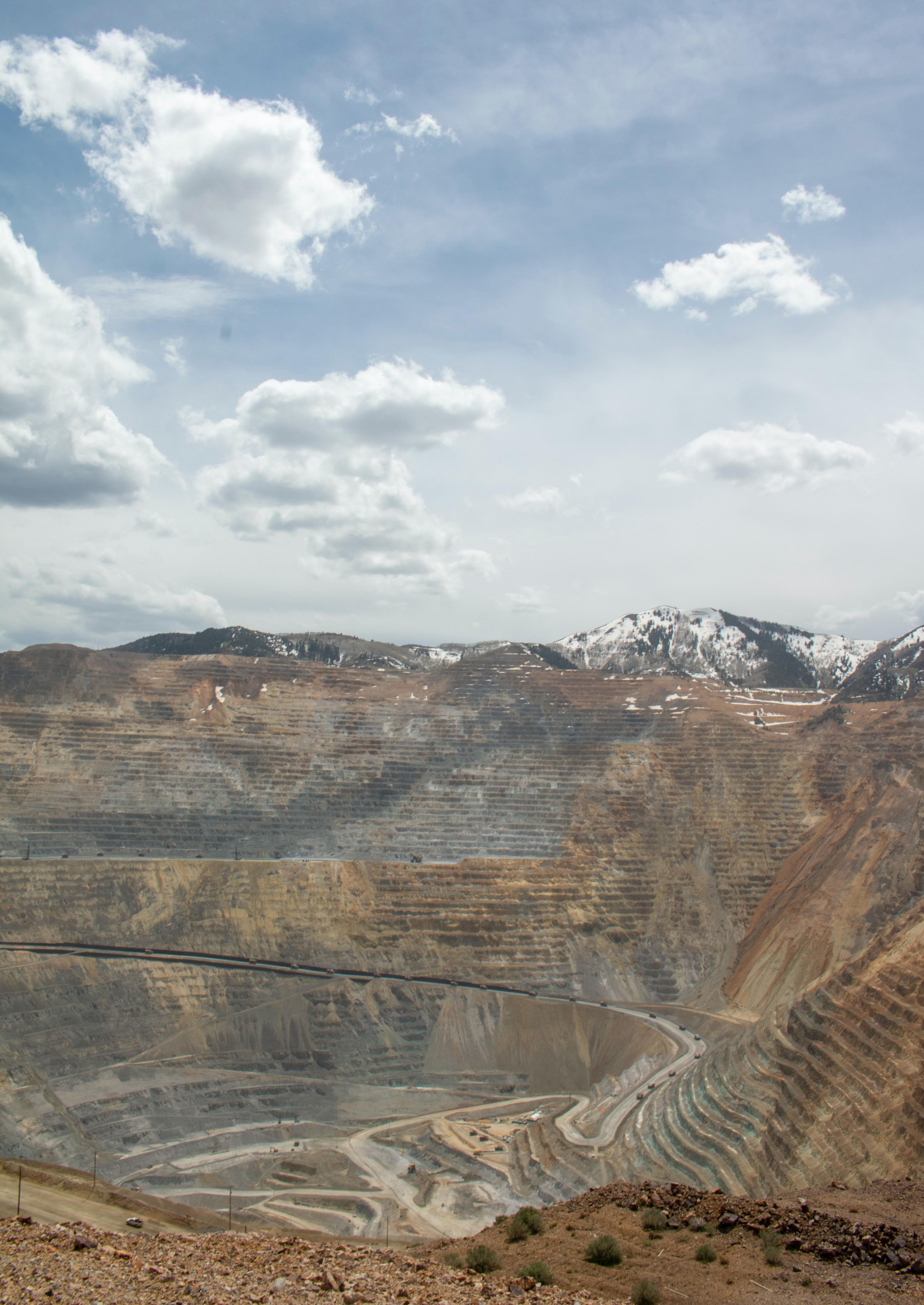
New tools and channels enable both consumers and producers to better track and display information about products and services.In a more complex world,we are demanding that the technology gets put to good use.We want more insights into everything because everything is better when there is trust.
Scoring is now becoming a reality everywhere. With the increasing amount of data and abundance of information, the need to establish meaningful metrics is greater than ever – and so is the ability to calculate them. With data such as carbon footprint, origin and increasingly hammering demands for openness and transparency in supply chains, manufacturers and technology companies are rushing to create methods to rank and score everything from products, to processes and even to people.
To some extent, scoring has always existed. In most industrialized countries, credit ratings ensure security of payment. In China, individuals are scored based on their behaviour among other things to improve trustworthiness, laying the ground towards a so-called algocracy (government by algorithm).
Food products are often required to display calorie data and other nutrients. Oatly has challenged traditional players in the market by also displaying the carbon footprint of its products and is now encouraging everyone in their industry and beyond to do the same.
By combining enhanced transparency with norm-nudging, which aims to provide people with information about the choices other people make6, it becomes theoretically easier to steer consumers in a better direction to make more informed choices. Research in the field of sustainable transportation for example, found that students who were told that other commuters switched to sustainable forms
of transportation (like biking) were five times as likely to switch to low carbon alternatives as well, compared to those who were just provided with the information about the possibility to adopt a more sustainable mode of transport7
The increasing use of biometric data to identify ourselves on our devices provides new types of data that can be used to develop new scoring systems.
The circular economy requires us to have an overview of the flow of materials and creates the need to determine which materials are better suited for specific purposes. Chainable is an example of a Dutch company that builds circular kitchens and calculates a circularity index of 82% for its products – much higher than its competitors that do not use recycled or upcycled materials.
Blockchain technology is also likely to play a key role in building these tracking systems as there will be players who specialize in analysing and scoring the data, while making it accessible for organization that need it.
Scoring is sometimes a necessity to place data in a wider context. Research has shown that well designed labels for carbon footprint can greatly help consumers make better choices, but it is more useful when a product’s footprint is showing compared to the footprint of other similar products.
6 “Trendupdate – hållbar konsumtion & livsstilar”, Kairos Future & Science Park Borås, 2020
7 https://journals.sagepub.com/doi/10.1177/0013916513520416
One of the motivations als tend to underestimate efforts made by others, the social pressure that wing more about what This is one of the triggers ble consumption behavior relation to the Sustainability ("Hållbarhetstrappan")
motivations being that individuunderestimate the sustainability others, thereby not getting that they may feel if knowhat others are doing. triggers for more sustainabehavior that we discussed in Sustainability Stairway model in our 2020 report.9
In a world of global production and consumption, people value authenticity. This extends to those in power. Being able to believe and trust a supplier is often a decisive factor in choosing a company, and increasingly so. The stakes are also getting higher as access to people’s data becomes an important part of doing business in all industries. Here, customers need to feel they have confidence in an actor to manage their data.
Digitalization has made it easier to seek, collect, store, compare, review, and validate information. As a result, media, citizens, and consumers expect greater transparency from businesses and organizations. Transparency is also spreading to the impact of products (ingredients, origin, etc.) and consumption. Reporting on each part of the manufacturing process, and demands for more certifications etc., show that it is becoming increasingly important for organizations to work with these issues to maintain trust in the consumer’s eyes.
Nike, for example, has developed an interactive map showing where all their products are made as well as containing the origin of the materials used in their production8
As more consumers become aware of the technological possibilities for traceability, a key challenge for companies will be to find creative ways to showcase information on origin, manufacturing, process and even carbon footprint.
8 https://manufacturingmap.nikeinc.com
Coming laws and regulations are also expected to drive the introduction of new traceability measures, such as the EU’s Sustainable Products Initiative that will introduce a Digital Product Passport to track the flow of products and materials. A challenge for researchers and policy makers will be to design fair metrics where, for example, climate impact in the value chain as a whole can be compared between products.
Science Park Borås, who commissioned this report, together with Swedish fashion brand Gina Tricot have launched a clothes collection with blockchain based NFC-tags embedded in the clothes. They provide complete transparency around the social, ecological and economic aspects of the supply chain that any user can check for themselves . French fashion brand Maje is another example of a brand exposing their supply chain, giving products a traceability score and displaying country of origin for each component of a garment, as well as the supplier’s certifications. Singular Society in Stockholm is also builing its business model around traceability, as its selling point is to sell products at better prices and show where all costs in the chain come from as well as where and how they are made.
More and more consumers are also choosing to turn to different types of influencers before buying products. Among the most prominent reasons people rely on influencers, honest opinions about products tend to rank among the highest. Many prefer to trust their favourite influencers rather than brands.
In a circular economy, the importance of tracking materials across various life cycles will become increasingly important. In their latest O2 model, Swedish car manufacturer Polestar has labelled the different grades of aluminium used with barcodes to make it easier to track and reuse materials.


In 2019, e-commerce’s share of total retail was around 11%, rising to 16% in 2021. As the digitalization of commerce keeps increasing and makes more parts of the supply chains invisible, we find a growing awareness that the future basis of our consumption needs to be built on resource-efficient, sustainable and transparent behaviours. Today we can see the first incremental steps.
In the book The Buying Revolution (Köprevolutionen), Kairos Future and SIIR (Swedish Institute of Innovative Retail) in 2015 described that the buying process has been polarized in two directions: routine buying and joy buying. However, we are now seeing growth in a third dimension: considerate and sustainable consumption to reduce impact. As the notion of ‘voting with one’s dollar’ has been cemented across consumerist societies, many are choosing to buy to help or support a cause. During the pandemic this was best illustrated by the ‘support your local shop’ signs in stores. Online we have also witnessed the fast growth of influencer merchandising (in addition to subscription via e.g. Patreon), whose followers generally buy t-shirts or other branded objects simply to showcase their support as a win-win situation10
The sharing economy also seems here to stay, even if the initial hype has faded. There are many established services in the restaurant and hospitality, retail and consumer, media/entertainment and automotive sectors. According to PwC, the five main sharing economy sectors (peer-topeer finance, online staffing, peer-to-peer accommodation, car sharing and music and video streaming) generate USD 15 billion in global revenues and the figure is expected to grow to USD 335 billion by 2025.
In parallel, there is a growing interest in repairing and extending the life of products rather than buying new
ones. To seriously compete with new purchases and the dopamine effect of shopping, innovative design and technologies are required. They should enable a makeover that makes discerning and conscious consumers feel good with the same type of feedback-mechanism that new purchases can provide. Cando is an app that allows users to buy second-hand clothes, but also gives tips on repairing and caring for different garments. Nudie Jeans, as part of their product, offers a lifetime guarantee on free repairs. By making it as easy as possible, these actors are pushing users to opt for the better choice.
In March 2021, the first right-to-repair laws came into force in the EU. As a result of the new laws, manufacturers in Europe will now be legally obliged to ensure that electrical and electronic goods, such as televisions and fridges, can be repaired for up to 10 years. This is a precedent that is likely to be extended to other sectors in the future.
Developments in this area rely heavily on efficient, stylish and easy-to-use digital platforms. With mobile phones at the centre of people’s daily lives, more and more services and apps are enabling smarter choices and behaviours in everyday life. Klarna, for example, is including a CO2 tracker in its app to help consumers keep track of their carbon footprint. With their latest acquisition of Pricerunner, they can simplify the entire buying process for consumers and also introduce new comparison criteria, such as CO2 footprint.
By combining this with norm-nudging, which lets people compare their performance to others and make them aware of what others do, this can stimulate better behaviour. Examples can be found in hotel chains letting their customers know that most customers reuse their towels, which tends to result in more people reusing towels overall. See the chapter on the Sustainability Stairway (‘Hållbarhetstrappan’) in our 2020 report11 for more examples.
10 www.europarl.europa.eu/RegData/etudes/STUD/2022/703350/IPOL_STU(2022)703350_EN.pdf
11 “Trendupdate – hållbar konsumtion & livsstilar”, Kairos Future & Science Park Borås, 2020.
The sustainable retail of the future may be in line with C. Andersen’s The Long Tail, i.e. a more precisely targeted offer with minimal overspill. Digitalization, borderlessness and scalability are creating changing structures and models where the customer experience can become increasingly interactive and intimate. It’s about personalized offers, tailored and designed to stimulate customer value and experience and convenience – all while minimizing waste.
As many as 54% of customers expect to receive some form of personalized deal within 24 hours of expressing interest in a brand and 71% are annoyed by a lack of personalized customer experiences, according to research from Segment.
ding how consumers are becoming more informed about the products they intend to buy. Along similar lines, the research consumers perform ahead of a purchase is done across multiple platforms. Attention needs to be given to how this research by consumers is experienced on different devices including computer, mobile, tablet and soon even in VR or AR – and when this research is done. What is most convenient at home? What is most convenient on a bus?
As many as 54% of customers expect to receive some form of personalized deal within 24 hours of expressing interest in a brand.
The customer experience of the future is intimate and upclose, in ways that may feel uncomfortable to many. As we become willing to share more data, experiences are becoming personal in new ways. It’s about using technology to analyse data streams to understand the customer before they do – or at least present tailored solutions that feel right.
It's also increasingly about understanding people’s everyday lives, the real-life situations they face and understan-
Consumer tribes – or lifestyle groups – can often be identified and form the basis of everyone’s tailored experience based on, for example, level of engagement or other interests.12 And as datasets grow larger and more precise combined with better performance from artificial intelligence, it becomes possible to zoom in and find micro-tribes.
Personalized commerce is growing as companies collect more data, especially data from new sources like wearables, which can increasingly start to understand how we feel and capture our emotions with personalized offers. Amazon has started making predictive suggestions when it assumes a customer needs something again. Similarly, a customer wearing a connected watch and feeling stressed might be increasingly exposed to ads addressing their specific state of mind and health pattern dynamically.

More and more consumer-related businesses are looking at the possibility of selling directly to the consumer or household. With a shorter value chain between customer and producer, and improved delivery options with both faster and smoother handover, convenience and new business opportunities can be developed in both product and service offerings.
Digitalization and AI are transforming consumption and new business ideas are emerging in the local living room to help energy-depleted, stressed and convenience-seeking consumers. In retail, we are also seeing an effort to turn away stores from densification and urban sustainability goals are simultaneously forcing businesses to create smarter deliveries as well as to adjust time and distance for resource efficiency.
There has been a shift in what is considered local, which has moved from just referring to Sweden to include larger parts of Europe, as there is a greater understanding of strengths and weaknesses among countries.
In tourism, we are also seeing the growing so-called "staycation" trend but also increased interest in the local community during the trip, with 68% of travelers saying they would like to see the money they spend in a place go back to the local community.
Farm to Fork (‘Bonde till Bord’) was a growing example of new direct trade. Registrations have grown substantially since its launch in 2016 in Sweden. REKO stands for Rejäl Konsumtion (which might roughly be translated as ‘Proper Consumption’) and is a way to trade locally produced food, completely without middlemen. Buyers and sellers connect with each other through special Facebook groups and start a REKO ring where raw materials and products are sold directly from producer to consumer.
More recent examples include CrowdFarming, which sells fruit directly from farmer to consumer online and where consumers can also adopt a mango or olive tree and receive regular deliveries of what the tree produces. This may stem from an understanding that certain plants cannot grow everywhere, such as mango trees in Sweden. As such, Spanish mangos may be the closest EU alternative to local.
In tourism, we are also seeing the growing so-called ‘staycation’ trend but also increased interest in the local community during the trips, with 68% of travellers saying they would like to see the money they spend in a place go back to the local community. During the pandemic, the ‘support your local shop’ motto has only grown more important.

New technology allows bloggers and influencers to directly offer the products they feature in their feeds, and Facebook is creating private, exclusive fashion sales groups. Instagram in 2019 introduced a store tab in its app that suddenly made it possible to sell directly through the app.
Rating suppliers, customers, cashiers and others is becoming more common, and an increasing share of the economy depends on high ratings. Two separate logics emerge, between friends and ‘regular people’ who contribute the quantitative data, and influencers who qualitatively help build a more emotional connection to brands. Depending on the scale of the follower base, influencers are considered to be, for example, nano-, micro-, macroand mega-influencers.
The number of YouTubers is increasing, and they are influencing our buying behaviour to a greater extent. As an extension of this trend, we also see the share of influencers with a sustainability profile growing with more subgroups emerging. They are also growing better organized by inviting their followers on services like Discord, where they can chat, talk and share ideas.
Influencers can be found in several fields, such as technology, fashion, cars, education. They have different audiences, but often a younger audience than the average population.
The trend behind this is that communication is merging with the shopping experience. The way they communicate can lead directly to sales, forcing companies to rethink how communication can become their main sales channel.

In a world of inequalities and mental health issues we are spending more time thinking about how we and our surroundings can feel better.
More people are questioning life’s treadmill and stress. Instead, people are seeking mental balance and spiritual health. The FIRE movement for example is gaining traction and stands for Financial Independence Retire Early. Its followers aim to save as much as possible assets to retire early and live on passive income, thus freeing themselves from the stress of a standard day job and pursuing they passion.
In recent years, Maslow‘s pyramid of needs has introduced a new step above self-actualization: helping others to actualize themselves. More and more conscious consumers are showing a willingness to do good and give back.
At the same time, there is a growing awareness that ‘cheap’ for me is ‘expensive’ for someone else and words like ‘collaborative’ and ‘solidarity’ are becoming more important.
Younger generations also value these qualities in brands and a kind of karma capitalism is being called for, where it is now expected that all types of organizations should contribute positively to some problem.
In parallel, there is a growing idea that one must solve the internal problems one is struggling with oneself, in order to then help or criticize others. This can be seen in e.g. Jordan Peterson’s growing popularity.

The proportion of people who identify with LOHAS (Lifestyles of Health and Sustainability) is also growing. LOHAS includes individuals who want to live an enjoyable, healthy and exciting life but not at the expense of someone or something else.
Mental health, whether it is everyday psychological problems such as depression and anxiety or a sense of direction and purpose in life, has also become increasingly important in society and there is more and more talk about the importance of both. Not least during the pandemic, attention has been drawn to the subject and the importance of looking after one‘s mental health has been highlighted. The rise of online psychologist services such as Mindler and Better Help are indicators of this trend.
To a different extent, the demand for more local introduced in trend 10 can also be seen as a way of caring, nurturing and supporting the local fabric in one's own areas which links back to the idea that if you want to help the world, you should first help yourself and those near you. (See also Section 3.3.4.)
Many are experiencing a greater sense of awareness of how one’s choices affect people but also animals and nature. It may partly stem from a desire to reconnect with the natural environment in an increasingly digital and virtual world and many similarities can be drawn with several historical movements, such as Romanticism in the end of the 18th century as society was undergoing fast industrialization and impacting the environment. Perhaps one of the biggest differences is to be found in how we relate to this environment. Cultural Futurist Annegret Affolderbach told us in one of the interviews that:

While romanticism was based on viewing nature as a piece of pristine art and idealizing it from the outside, we find ourselves in a period in time in which we need to reconcile the scientific rationalization of nature together with its emotional and cultural importance to us. Understanding that we are part of the biosphere and part of a global ecosystem is a crucial step in becoming a sustainable society.
This focus on care and low desired impact leads many to question even the notion of being a consumer, as someone whose primary function is to consume. Annegret Affolderbach argued that we ought to change the way we think about the consumer:
‘Everyone has become a consumer. I don‘t want to be a consumer, I’m a human being. I’m a much more complex person than my consumption habits. And therefore, we have to be clear in the language we choose, because it places change in front of us.’Cultural Futurist Annegret Affolderbach Photo: Private
‘We see ourselves separate from nature, and that is our biggest problem.’
By multidimensional inequalities, we refer to the various differences in opportunities that can be observed. With increased amounts of data and global ambitions to close gaps, these inequalities in opportunities are receiving more attention and are more visible.
Sweden has gone from being one of the least unequal, to the most unequal among the Nordics since the early 2000s, according to Nordregio.13 It is also one of the countries where inequalities are fastest growing among OECD countries, though they remain comparatively low in a global perspective. Across multiple countries however, we are witnessing an acceleration of financial inequality14.
One’s geographical location is still a strong determinant of different standards of living, such as what jobs or public services are available in sparsely populated areas. We are also more likely to start observing the unequal impact of climate change, on housing among others (e.g. low-lying land).
Individual background and abilities also tend to affect one’s chances in life, such as being native or foreign-born. Gender and sexual orientation are also still leading to various forms of discrimination. On the other hand, an educational gap is still persisting between men and women depending on field and academic level15, while certain countries are also observing unequal distribution of men and women in urban and rural areas16
There are also growing differences in wealth accumulation between those who are able to buy their apartments and those who are not, as the availability of rental apartments plumets around cities worldwide. This has led to problems of accessibility to the city and questions around who the city is made for.17
Individual ability to build networks for access to jobs and human connections, as well as poor mental health (and/or access to treatment), can paralyze even the best placed.
In a more knowledge-intensive economy where complex problem solving is central, there are also differences in production capacity between different employees. In a 2012 study of over half a million, athletes, entertainers, politicians, and researchers, O’Boyle Jr. & Aguinis found that performance follows a Paretian distribution (and not a Gaussian distribution), meaning top performers were around 400% more productive than the average.18 This has strong implications for future talent acquisition.
Outside of individuals’ own capacities, there are also filter bubbles from internet presence that tend to strengthen people’s perceptions and opinions in closed and selfreinforcing information systems. This also affects sustainability itself, polarizing it between believers and non-believers, or how the issue is understood and what is considered most important.
Through social media and the internet, many of these differences in opportunity are getting more visible. Addressing those is increasingly part of a sustainability strategy for organizations.
13 https://nordregio.org/nordregio-magazine/issues/state-of-the-nordic-region-2020/swedeninequality-in-sweden-grows-much-faster-than-in-the-nordics-overall
14 https://inequality.org/facts/global-inequality
15 https://ec.europa.eu/eurostat/statistics-explained/index.php?title=Tertiary_education_ statistics#Participation_of_men_and_women_in_tertiary_education
16 www.sciencedirect.com/science/article/pii/S0743016721001479#bib19
17 www.ft.com/content/ef99cac4-9115-4934-989d-fb05091ae988
18 https://onlinelibrary.wiley.com/doi/abs/10.1111/j.1744-6570.2011.01239.
Sweden has gone from being one of the least unequal, to the most unequal among the Nordics since the early 2000s, according to Nordregio
We started this trend section by arguing that sustainability was getting more complex because of the need to measure, rank and evaluate more environmental aspects combined with a general complexity around the ecological crisis: climate, biodiversity, acidification, etc. All these aspects are admittedly very difficult to comprehend on the scale of a human life.
At the same time however, we are inching closer to a broader vision and idea of what a low carbon economy looks like. Initiatives and prominent examples of successful sustainability all around the world are being lifted and used as best practice: ecological urbanism, zero waste shops, etcetera.
The early steps to define sustainability were complex and eventually culminated in the UN Sustainable Development Goals, a list of 17 targets designed to be used as a roadmap for humanity.
While still broad and complex to many, sustainability is becoming more tangible by the day as governments have set net zero emissions targets, which have helped define directions, and this is now one of the main drivers of transformation in many sectors, including the electrification of the automotive industry. Accounting firms are also getting better at verifying and following up on climate targets, as well as implementing standards.
We are also seeing an increase in data on climate emissions, which has made it possible to increasingly quantify different types of products and suggest less carbonintensive alternatives. The forthcoming EU regulations under the Sustainable Products Initiative will put in place the world’s first comprehensive framework for the circular economy by providing a data-driven incentive scheme for the re-use of materials.
Of course, major uncertainties remain, such as who bears most of the responsibility and costs or how to create useful economic incentives.
But increasingly we are realizing – as a collective system –that regulatory change is one of the most powerful drivers of structural change, and many companies are taking on the role of business advocates.
Overall, sustainability is still an extremely complex concept, but the development of good examples, startups and innovations in climate technology and impact companies has created a growing sense of concreteness. Light at the end of the tunnel – may be one way to view this trend.
New technologies and a changing industrial society (T-society = Thought Society) are redrawing the map of our world. While digitalization shortens distances, it creates new densities and clusters. Around the world, we are also seeing continued strong rates of urbanization. Many experts believe that dense urban environments are the most efficient in terms of resource consumption and use. At the same time, more and more people are realizing that sustainable cities (socially, environmentally and economically), require urban development to be peoplecentred. We seek safe places to live, work and visit. It is also easier to trigger sustainable behaviour towards the community when local bonds are stronger, as climate psychologist Kata Nylén said:
The activity-based city has become a desirable model and many planners are thinking in terms of Place Destination, where tourism and urban development are not separated. The focus is on transforming unsafe, unused urban environments into places with a strong identity that attracts people. Our values are also gradually becoming more urban, and in the city we seek security, overview, community and nature.
So-called filter bubbles are fuelling the desire to meet likeminded people and find a community. Also, when modern careerists are given the choice of where to live, they tend to choose cities that focus on people, not cars. Luxury and status are increasingly determined by having access to popular social venues and being within cycling or preferably walking distance of everything: school, work, shopping. Everything should be local or at least feel local.
A good example is the 15-minute city, a concept launched by Paris’ Mayor Anne Hidalgo. Her re-election campaign was based on the idea that everyone living in Paris should have everything they need (food, healthcare, shopping, entertainment) within a 15-minute walk. All over the world, citizens are reclaiming public spaces, making them greener, more people-friendly, more personal and, above all, more local.
‘Start getting involved in the smaller community, for example growing something together with your neighbours.’
Around the world, more and more people are exploring ideas around what type of economic paradigms will be the next step after our current system. The advent of digitalization and the growing climate crisis are some of the main drivers for people and researchers alike to argue that the economic system we have had for the last 500 years or so is quickly becoming obsolete in the modern world, one based on eternal growth and consumption.
One of the problems is a growing realization among people and academics that it may be impossible to decouple GDP from greenhouse gas emissions. Many are skeptical about the idea of ‘green growth’, which they see as simply shifting greenhouse gas emissions to other countries and doing nothing to change the fundamental way in which the current system works. For many, climate conferences have not proven to be effective (Figure 9), which serves as additional proof of something structurally wrong. Anders Wijkman also said during the interview that:
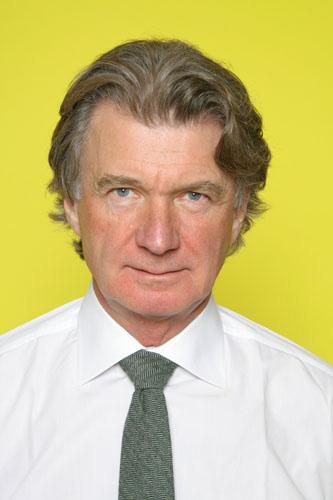
Another problem that many proponents of degrowth see is the almost one-sided focus on GDP as a measure of progress, which they argue in turn leads to a religious-like focus on growth as a goal. They argue that because our growth follows an exponential pattern and our world has a finite quantity of resources, the growth model is fundamentally unsustainable.
Much of this thinking has its roots in the Club of Rome report published in 1972 entitled ‘The Limits to Growth’. Anders Wijkman is the honorary president of the Club of Rome and was co-president from 2012 to 2018. While being a landmark and highly impactful report that resonated strongly in the research community, it appears fundamentally difficult to integrate with modern business and economics.
‘What I have to start by saying is that most economists have not properly understood this [ecological crisis]. They are of no help in this context. They still have some sort of attitude that nature is a constant and infinite, and the economic models they use do not consider, for example, our enormous need for high-quality energy. We’ve gotten that from fossil fuels that have until now been cheap – now we have to do things differently.’Anders Wijkman, former member of the Swedish and European parliaments, honorary president of the Club of Rome
Mikhail Jordaan put it simply:
Therefore, according to degrowth advocates, the focus should be on measuring that which is important to people, such as quality of education or happiness. In general, the movement advocates three basic goals:
• Reduce the environmental impact of human activity.
















• Redistribute income and wealth both within and between countries.
• Promote the transition from a materialistic society to one of coexistence and sharing.
A number of environmental organizations and citizens with strong ecological views are likely to share many, if not all, of the movement’s views. They also include many activist consumers who expect organizations and companies to take a stand on important issues, both social and ecological.
‘It’s difficult to justify something that is obviously better for the planet and for the people but doesn’t have a clear connection to the benefit of their business. “The good will is not good for the bottom line” is a sentence I hear often.’
Our global material footprint is increasing, faster than population growth and faster than GDP growth.20 High and upper-middle income countries are responsible for most of the footprint19, but high-income countries’ material footprint is larger than upper-middle, lower-middleand low-income countries combined.
This tells us that, despite calls to reduce consumption or to consume better, we don’t seem to be buying less things. Hence, we are really in a period of maximalism, accompanied by a desire to reduce impact, by for example buying handmade, second-hand or anything short of mass-produced. As Rebecca Jennings from Vox21 described it, we are finding ourselves in a period of ‘vintage maximalism’ .
For a few decades, minimalism has been an important trend, especially in the context of a post-crisis period in 2008 where having fewer items was an economic necessity for many and a status symbol for others.
The growing popularity of sites such as Etsy is also a sign that some want more ‘stuff’, but that many would preferably have objects that are handcrafted and unique rather than a mass-produced item, which is unlikely to come from a particularly ethical production line.
We do not seem to be buying fewer things. Many are happy to look for objects with smaller footprints such as vintage or second-hand in an attempt to limit their impact, but the will to consume still seems strong.
19 The total amount of raw materials extracted to meet final consumption demands.
20 https://unstats.un.org/sdgs/report/2019/goal-12/
21 www.vox.com/the-highlight/21506030/maximalism-minimalism-home-design-jungalow
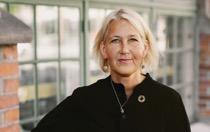 United Nations Assistant Secretary-General and Director
United Nations Assistant Secretary-General and Director
In the past years, it seems that global events have given a security dimension to sustainability, would you agree?
Yes, very much so. Climate is on the agenda in the Security Council, against all odds. We have shifted to a more risk-oriented perspective which is the language governments and companies speak. It’s changing everything: conflict dynamics, where people choose to migrate but also how businesses have to operate. This means the human dimension is real, at the UNDP we have a term for it: Human Security.
The private sector is also negatively affected: when there are rising inequalities, that tends to lead to social unrest, which is bad for business. This unrest exists everywhere and is a call to strengthen the democratic process as it also affects trust in democracies.
For every percentage point increase in food costs due to conflicts like the one in Ukraine, we are talking about 10 million more in extreme poverty. That’s one example of social unrest.
How can a consumer relate to major world events while at the same time relating to the local?
We must cooperate internationally, whether in trade, aid or the environment. Issues related to climate and biodiversity are borderless and require dialogue and cooperation.
This requires that we have peaceful relationships with each other as countries and historically it has been trade that has been a lever for economic and diplomatic development and peaceful cooperation. That idea has somewhat lost traction in recent years, so we need to revive it in some way but simultaneously rethink trade in new ways, with less impact.
Global initiatives should think about how they can reach out and learn from each other more, both inside and outside Europe. We sometimes tend to think that we are particularly good at innovating, but there are simply people everywhere with great ideas.
The question of who bears responsibility between individual, business, politics often comes up when we talk about sustainable consumerism, what’s your take on it?
It goes without saying that there is an interaction between the individual and national and international politics, business, etc. Everyone has a role and a responsibility. But industries simply have to become more sustainable: less waste, more upcycling, more recycling but above all, more cooperation.
What is particularly important to work on at the moment?
Information on impact is probably one of the most important aspects. Knowing what the real impact of a product is (chemicals, CO2, etc), is a key issue. You have to be able to measure and compare. And this is valid both for consumers and policymakers. Here we see that we are getting better and better just in the last few years with this type of instruments. So how you label products is extremely important.
At the UNDP, we have been working a lot on this type of project by linking information to the SDGs, including in finance (https://sdgimpact.undp.org/).
The labelling industry and industry standards on sustainability are currently private activities most of time. We would need to harmonise these on a global level so that everyone knows what we mean when there is a label on e.g. sustainable fisheries.
How do you see the role of the European Union in the transformation to a sustainable society?
Europe has been a very attractive model of society, and has a major role to play, especially in leading good regulation. But it is not certain that it will remain so in the future. If the EU is to be the north star of that transformation, it needs to be better at reaching beyond its own perspectives and not pointing fingers but rather leading by example.
Not everyone has the same perspective and priorities, because everyone starts from a different place. Europe must find ways to stand up and show understanding for other countries’ views.
Leadership is about leading in a way that inspires, gets people on board. Nobody wants to follow a know-it-all, you simply have to engage them.
As part of an aim to not get stuck with a narrow Western perspective, the study has included a global outlook using AI-structured media reports as a lens. To get an idea of what discussions about sustainability in relation to consumption look like around the world, we collected 536,929 articles published between March 2021 and February 2022. Each article mentions both sustainability and at least one consumption-related term22, and was picked up from English- and Spanish-language news media around the world. We then processed the articles using Dcipher Analytics, a tool for analysing large amounts of text with help of Machine Learning and Natural Language Processing. This allowed us to get overview maps of different topics, which we used to examine what public discourse on sustainability and consumption looks like in different parts of the world.


The topic map was generated by calculating, using an AI algorithm, how similar or different each article is, semantically, compared to each other article – and then projecting a representation of each article on a two-dimensional surface with similar articles being placed close to each other. The result is a map of interrelated topics, formed around clusters of related articles. These thematic clusters can be seen clearly once we draw a heatmap with colours corresponding to density (Figure 12).
For a detailed description of the process, see the Appendix
We like thinking of Figure 12 as a ‘landscape’, in which the thematic clusters stand out like hills do on a topographic geographical map. To gain an understanding of the topics, we have explored the text landscape by studying a sample of articles from its different parts up close. This research is the basis for the labels that can be seen in Figure 12. As we can see, the text landscape contains areas related to fashion and clothing in its upper-left part, to the right of which we see topics related to food, different aspects of resource-efficiency, and energy. The lower-right parts of the landscape include various societal aspects of sustainability and human rights, as well as questions of resilience and security. The lower-left parts cover topics including local communities, togetherness, and mental health.
The topic map was generated by calculating, using an AI algorithm, how similar or dif ferent each article is, semantically, compared to each other article – and then projecting a representation of each article on a twodimensional surface with similar articles being placed close to each other. The result is a map of interrelated topics formed around clusters of related articles. These thematic clusters can be seen clearly once we draw a heatmap with colours corresponding to density (Figure 11).





















































Figure 12






































The ‘text landscape’. A thematic map of topics, generated through vectorisation of the English-language news articles.
Recycling and reusing
efficient Mobility
Single use packaging
production
Planned obsolescence
Access to clean air and water
Upgrading and repairing
Optimising energy usage
Insurances
Responsible saving
Resilience
Resource security
Inequalities exposed during pandemic
Contrasting ideas human rights situations
Consumers’ vulnarability to climate change disruption
Photovoltaic systems
Fossil fuel dependence Energy costs passed on to consumers
Minimum wage
Renewable energy
The labels in the text landscape represent topics that are prominent at a global level. All of these topics can be seen all around the world, but that does not mean that all topics are equally big everywhere. European articles, as an example, are more often found in the upper-left of the landscape, with themes including fashion and diets. Articles from the Middle-East and Northern Africa, in contrast, are most represented in the lower-right of the map, with themes connecting to resource security and human rights. Articles from South-East Asia can typically be found in between, with overrepresented themes having to do with resource-efficiency and waste-reduction, as well as technical solutions creating new purchase channels and increasing traceability. (Figure 13.)




Another way of looking at regional differences can be seen in Figure 14.

Parts of the landscape that are especially prominent in three geographical regions.







For this overview picture, we divided the world into nine geographical regions and produced one word cloud for each. The words shown in a region are words that are overrepresented in texts from that part of the world. For example, the word ‘packaging’ is large in Europe because it is used a lot more frequently in articles from Europe than from elsewhere. A brief summary of topics that are especially prominent in each of the regions follows. Again, almost all topics can be found in almost all regions; what we describe here are tendencies of where regions differ from the average.

Europe, which looks unusually large in the figure as our texts from there include a small number of articles from Russia, is a region characterised by a strong focus on consumer products, their packaging and branding, and different forms of purchasing situations. Looking at what product categories are discussed, clothes as well as food and drinks stand out. For example, this is one of the regions where we see most discussions about plant-based and lab-grown meat. The practice of recycling is also especially prominent in the texts from Europe.
In East Asia, the analysis has mainly included articles from mainland China, Japan, Hong Kong, and South Korea. The news texts in this sample mentioned both sustainability and consumption, generally with a system or government perspective. Most do not focus on consumption itself, but rather on underlying structures including production conditions, trade, as well as the use of materials and energy. The content and viewpoints of reporting and analyses differ notably between media published in mainland China and in other parts of the region, with Chinese media reflecting official narratives and policy. Government-led efforts for sustainable transition, in which consumption is one of the factors taken into account, feature particularly heavily there.


In Latin America, one of the prominent themes is the control and use of resources. One resource, water, is a particularly hot topic in Chile, where much of the water is privately owned. Mining and forestry – activities of resource extraction that in many places give rise to conflicts over damage caused to nature as well as indigenous populations’ right to their land – are also more prominent here than in other regions. Social challenges, including gender inequality, economic inequality, and the production and abuse of drugs, are other notable themes. The reporting is not solely focused on problems, though: political activities, including engagement of civil society, also feature prominently in the region.

Middle-East and Northern Africa is characterised by a need for resilience, not least because of climate change. Drought and falling water levels are particularly frequent in the texts, often in relation to new mitigation solutions. Many of these relate to farming, such as initiatives to reuse agricultural drainage water. In Yemen, the ongoing war makes it difficult for many to support themselves, partly because of landmines and a lack of fuel. Energyrelated topics are prominent across the region, with oil being important for many national economies while there is also great potential for solar power – with scales ranging from mega-plants to family solar panels.

Oceania, dominated by texts from Australia and New Zealand, has a strong community focus. Community activities as well as stories about the lives and experiences of individuals and families are especially prominent here. Mental health is another prominent topic, as are circular practices – notably repairs and second hand shopping. The latter mostly relate to fashion consumption, which is frequent in discussions of sustainable consumption here (as well as in Europe and North America).

North America, here represented by only the USA and Canada, tends to focus more than other regions on the responsibility of companies, both as producers and as political or social agents. Organic is a big theme – not only for clothes and food products but also for cannabis products, which are mentioned in relation to sustainability in this region far more often than anywhere else. Cars are more visible in the texts here, sometimes related to discussions of how the infrastructure of cities forces people into unsustainable commuting patterns. Other notable topics here relate to financial literacy: having what it takes to handle mortgages, choosing insurances, etcetera.

South Asia, dominated by texts from India followed by Pakistan and Bangladesh, often shows a government perspective in texts on sustainability in relation to consumption. The situation and practices of farmers is another common theme. Gender equality is discussed at a societal level, but also in relation to conditions for workers in the manufacturing industry – from factories building female-friendly washrooms to prevention of misogynistic harassment.
In South-East Asia, one of the big topics relates to waste, and in particular waste from plastic packaging that often end up in the wrong places. These topics include, for example, initiatives for plastic recycling, abolishing plastic cutlery, and stores charging customers for plastic bags. New retail channels, such as direct-to-consumer online platforms, also stand out among themes here.

In Subsaharan Africa, news texts tend to focus on resources including water, food, and energy – often starting from a state of scarcity, which may be on a household as well as a planetary level. Preparedness for and adaptation to climate change is a recurring theme, especially in relation to farming. Examples of mitigation initiatives range from going back to using a wider variety of traditional crops to leveraging AI to assist small-scale farmers. A wider range of social issues are also discussed in news texts from the region.


As we have seen, there is considerable variation in what is connected to sustainable consumption in global news reports – both among the different topics in the ‘text landscape’ (Figure 12), and regarding which topics stand out in different regions.
One might argue that the topics connect to the overarching theme of sustainable consumption more or less strongly. Some topics, like those relating to individuals’ choice between consumer products, would then be about sustainable consumption in a very direct way, while questions about production conditions (which are highly relevant for the consumer who wants to choose a sustainable product) would be linked to sustainable consumption in a slightly more indirect way. Topics related to the environments in which consumers live, such as uncertainty about income, security, healthcare, access to water, etcetera, would also be seen as indirectly connected to sustainable consumption. However, we are not convinced that this is the only way in which one can understand sustainable consumption. Rather, we see different starting points in the texts and have listed these in Figure 15. Such different starting points, we believe, impact what is more and less frequently discussed in relation to sustainable consumption.
One of the contrasts that can be seen between different starting points is that of lifestyle versus production condi-
tions (which we have also tried to capture in Figure 1 in the introduction to this report). Another distinction can be made between the act of choosing products, the act of political engagement, and the various drivers behind the two (including scarcity, resilience, and social relations). Taking scarcity as a starting point is interesting as it, like starting from lifestyle consumption, puts choice of products at the centre stage. Compared to lifestyle, however, a scarcity mindset can make circularity considerations come more naturally. This is something we discussed in the interview with Mikhail Jordaan. (See Section 3.3.3.)
From a European perspective, some of the topics that have surfaced through the analysis of texts related to sustainability and consumption may perhaps feel peripheral. If that is the case, it may be because – when the focus is on self-image and lifestyle in itself, which we have seen is especially common in Europe – products and the purchasing act naturally get the centre stage. Slightly exaggerated: sustainable consumption is about me, my shopping, and my sustainable style.23 If, in contrast, the starting points are my living conditions – or external conditions in society or environment – product choices become secondary. One will then either speak of product choices as a means of contributing to what is actually important (such as avoiding bad forms of production), or one will speak about sustainable consumption at a system level instead of an individual level (which, for instance, is a dominating perspective in news texts from East and South Asia), or one speaks about doing something else (such as growing food together with your neighbours) instead of purchasing more things than necessary.
23 European consumers, of course, also differ from each other in the extent to which they focus on their personal image, the impact of their consumption, and collective transformation. The Sustainability Stairway in Chapter 4 offers a framework for segmenting consumers along those lines.
The following sections can be read as a journey around the text landscape, with stops at seven themes that caught our attention in the research process – either because they contain eye-catching phenomena, or because they highlight interesting contrasts between different sustainability mindsets.
Readers of the trend report we published in 2020 on the theme of design for a sustainable lifestyle24 may remember Saruga, a packaging-free store in southern Jakarta (Indonesia). The same year, Saruga received wide-spread attention after entering a collaboration with Unilever for selling the latter’s hygiene and cleaning products by the gram through refill stations.25
At the time, the initiative was described as a way of contributing to the Indonesian government’s plans for an Indonesia without plastic pollution by 2040. An important source of today’s plastic pollution in South-East Asia (which is, together with Latin America, where the topic of plastic waste stands out most) is the small single-serving plastic sachets, in which many hygiene products are sold. While it may be argued that such packages have had an inclusive function as they have made modern consumer products more accessible to low-income groups, the typical multi-layer design make them notoriously difficult to recycle. There have been some experiments in the Philippines with using used sachets as an ingredient in construction materials.26 But, on the whole, a lack of recycling infrastructure, not least outside of cities, aggravates the problem, with many sachets ending up in nature and in the sea. Multinational companies, including Unilever, have received a lot of criticism for the pollution caused by their sachets, and for allegedly using people in poverty to increase the use of single-use plastic.27 Unilever now refers to its collaboration with Saruga in its communication on the topic.28
Getting rid of packaging is not the only potential sustainability benefit of refill concepts. Like single-serving sachets, selling a product by the gram also allows consumers to buy small quantities, and may thus make the product more accessible and make it easier for consumers not to buy more than they need – thus reducing waste on the consumer side. From a system perspective, however, an eye must of course be kept on how much waste is generated at a retailer’s facility, as keeping a product from getting spoilt may be more difficult without traditional packaging. Another uncertainty, for anyone hoping that refill stations for shampoo and the like will increase inclusivity, is whether this retail format will spread from fashionable stores in big cities to the rural areas where many buyers of sachets live.
While consumers and retailers have become more aware of the challenge of contamination risks, this is an example of how packaging-free retail concepts are still going strong and continue to evolve. Refill solutions are introduced by retailers from global chains to local farm shops.
‘Skin and body care brand The Body Shop Malaysia has launched its first refill station at its Suria KLCC store to help more people opt out of packaging’
New Straits Times (Malaysia)29
‘Kathryn said: “In Greater Manchester and Cheshire we are so lucky to have so many brilliant local producers. The extension will include a big new winery section, a refill machine to help cut down on packaging as well as milkshake machines with milk from the dairy farm next door.”’

Cheshire Live (U.K.)30
24 “Trendupdate – hållbar konsumtion & livsstilar”, Kairos Future & Science Park Borås, 2020.
25 www.thejakartapost.com/life/2020/03/07/unilever-indonesia-provides-refill-station-in-bintaro.html
26 www.latimes.com/world-nation/story/2019-11-10/the-tiny-plastic-packages-that-are-fueling-asias-waste-crisis
27 For example, Indonesian activists have been staging protests in June, 2022. (https://en.tempo.co/read/1602350/ activists-protest-unilevers-massive-plastic-sachet-waste-problem)
28 www.unilever.com/news/news-search/2022/why-do-you-continue-to-sell-plastic-sachets/
29 www.nst.com.my/lifestyle/flair/2021/12/758923/body-shop-launches-refill-station32
30 www.nst.com.my/news/nation/2021/04/682838/10000-tonnes-food-plastic-wasted-daily
Waste of resources is a key sustainability challenge, that is discussed in slightly different ways in relation to production and consumption. Whereas resource-efficiency in production tends to be discussed in technical and optimisation terms, the need for reducing waste at the level of consumption is more often treated as a moral question tied to the virtue of thrift. It is commonly discussed in relation to food consumption, not least in connection to major holidays – with celebrations in many cultures being associated with serving an abundance of food.
Less than a week into Ramadan, some 10,000 tonnes of leftover food and plastic materials are being wasted daily. Environment and Water Minister Datuk Seri Tuan Ibrahim Tuan Man said increased disposal of leftover food and plastic materials has threatened drainage system and rivers.
New Straits Times (Malaysia)31
The idea of thrift as a virtue can be seen clearly in China’s state-led struggle against food waste, which took off in 2020 with the government’s ‘Clear Your Plate’ campaign. In 2021, a new law was introduced to support the campaign, with measures such as allowing restaurants to charge diners with a penalty if they leave food on their plates. Something else that received a lot of attention both inside and outside China is a ban on so-called ‘binge eating’ videos – social media videos in which people are eating excessive amounts of food. The ban has been motivated partly as a means of strengthening food security and decreasing the reliance on imports and the country’s exposure to external uncertainties. This is in line with the trend of sustainability measures being motivated by the need for resilience, covered in Section 2.1.5. While security concerns may be pragmatic, the law is also described as a way to ‘foster a resource-conserving and environmentally-friendly society’32, to quote the Global Times (a Chinese newspaper which outside China is often described as a nationalist tabloid). This promotion of thrift as a virtue can be interpreted as part of a wider campaign against what the government sees as signs of decadence.
Governments efforts to reduce food waste are also seen in many other parts of the world. Climate change, the pandemic, and now the war in Ukraine have made the topic increasingly urgent as a security threat:
‘Speaking at the launch event of Fresh at NTU on Tuesday, Minister for Sustainability and the Environment Grace Fu pointed out that Singapore’s food supply, which is mostly imported, is vulnerable to disruptions such as climate change and pandemics.’
Today (Singapore)33
Regarding clothes, a key topic related to waste is that of fast fashion, both as a business model and as a mindset among consumers: when fashion is cheap and easily accessible, some consumers treat garments almost like if they were single-use products. To counter such consumption patterns while embracing the practice of trying out and posing in many different outfits, tech companies and luxury fashion brands are introducing virtual clothes that only exist digitally. They can either be projected onto an image of yourself, or to dress up an online avatar. Some virtual outfits are sold in the form of non-fungible tokens (NFTs).
‘“I know many women who buy an outfit, wear it once for a single photo and never again,” said Boemeke. “They could reduce consumption and waste by using digital fashion for a few of those posts.”’
South China Morning Post (Hong Kong)34
Another approach to waste, demonstrated by a startup company in Nigeria, is to upcycle it into new consumer products:
‘A tech company, Trashpays says its operations have been programmed to ensure the profitable empowerment of Nigerian youths through active participation in its innovative waste management initiative. The co-founder, Oyetunji Adewale Bashir [...] explained that the startup was established to solve waste management problems and provide an avenue for buying and selling items produced from waste. [...] “We provided a template for upcycling and innovation of crafted items from waste and reusable items on our platform.”’
The Guardian (Nigeria)35
In north-east India, an entrepreneur tells reporters about her initiative for using plastic waste (see also Section 3.3.1) as a raw material for small-scale textile production:
‘I urge villagers to collect plastic shopping bags. I teach them how to convert the bags into yarn and weave home utility products. Weaving is a common practice in Assam, so most women have and use looms at home. I just teach them how to recycle plastic and make an extra income selling them. This is our contribution to the environment protection.’
The Hindu (India)
31 www.nst.com.my/news nation/2021/04/682838/ 10000-tonnes-food-plastic-wasted-daily
32 www.globaltimes.cn/page/202104/1222490.shtml
33 www.todayonline.com/singapore/platform-called-fresh-set-ntu-astar-and-sfa-research-food-safety
34 www.scmp.com/lifestyle/fashion-beauty/article/3151486/what-dolce-gabbanas-us6-million-sale-nfts-says-about
35 www.guardian.ng/property/environment/transforming-waste-in-nigeria-into-economic-resource/
Water and energy are two basic resources around which there are strong conservation narratives. For thrift in relation to these resources, conservation and recycling go hand in hand with the concept of harvesting. ‘We need green buildings that will be solar enabled; rainwater harvesting enabled, and wastewater recycling enabled’, as an opinion piece in Kenya’s The Standard concludes36. A discourse around water harvesting, which is particularly notable in India, involves learning from a tradition anchored in a history of scarcity. In areas where access to water has long been limited, water consumers have, for example, integrated a water harvesting function when building their homes – techniques which are again promoted today. These techniques have their roots in times when whole cities in arid areas were built for harvesting water, which Sunita Narain of India’s Centre for Science and Environment tells the India Times about:
‘CSE began researching India’s water conservation science in the early 1990s. A team of us were driving through the Rajasthan desert where we found these upside-down ‘flying saucers’ — it turned out to be an extremely clever water harvesting structure with an artificial catchment. Whatever rain fell was harvested and stored in an underground well. The science was incredible — one hectare of land could give you a million litres of water, even in Jaisalmer, which had the driest conditions of the world. The city itself had flourished despite receiving just 50 milimetres of rain in a year, thanks to harvesting every drop.’
Harvesting sunshine using photovoltaic systems, in contrast, is a hypermodern phenomenon. Thanks to the drop in costs, energy consumers around the world – including families and civil society organisations – are becoming energy producers. In the Middle-East and Northern Africa, media reports refer to mosques getting covered with solar panels.
’Estimated cost savings from installing photovoltaic (PV) panels at the mosques would be $375,420 a year at Al Nabawi Mosque, the largest single figure, and $373,200 at Umayyad Mosque in Damascus, Syria.’
The National News (United Arab Emirates)38
At the same time, solar panels are not without their own sustainability problems. Anders Wijkman, whom we interviewed ahead of writing this report, notes that the millions of solar panels mounted on roofs around the world tend not to be designed for being recycled. This, he says, is yet another example of a how short-sighted our economy is. (See also Section 2.1.8 about the rising demand for raw materials for green technology.)
Of course, conserving energy or water is not only about installing new technical solutions, but also about our dayto-day habits as energy and water consumers:
‘You do not need to change installations or electric appliances; just by making small changes and adopting new habits you can save energy at home, which in addition to helping to reduce your bills, also contributes to caring for the environment.’
Diario Libre (Dominican Republic)39 – translated from Spanish
The Times of India (India)37 36 www.standardmedia.co.ke/opinion/article/2001439435/why-green-buildings-hold-the-future-of-our-cities-major-towns
37 www.timesofindia.indiatimes.com/ancient-india-harvested-every-drop-of-rain-we-must-restore-this-science/articleshow/82107045.cms
38 www.thenationalnews.com/uae/2021/11/14/worlds-largest-mosque-in-makkah-could-lead-green-charge-under-solar-power-plan
39 www.diariolibre.com/estilos/buena-vida/dia-del-
ahorro-de-energia-seis-trucos-para-poner-en-practica-en-casa-MK29458664

Especially in the Western world, several competing narratives can be seen around frugal shopping in relation to sustainability. One of these says that an increasing focus among consumer on low cost – be it of clothes, food, or any other consumers good – is inherently bad and a driver of unsustainable production practices. Sustainable products, according to this view, cannot be cheap. Kaj Török, CSO at MAX Burgers and one of the experts interviewed as part of this study, recognises this mindset and notes that there are people who prefer slightly more expensive green options since they perceive sustainability as something you need to be paying extra for. However, low-cost supermarket chains such as Aldi are notably prominent in media reports about companies that have come far in their sustainability work, especially so in the U.K. and Ireland.

‘Aldi is making progress on reuse and refill initiative, with plans to trial its first deposit return scheme at a store in Scotland and a target to extend this to all its Scottish stores next year.’
In another narrative, a focus on (low) price is part of a frugal lifestyle with the aim of economising one’s own resources as well as those of the planet:
‘At home, Le Coz teaches her kids about the effects of plastics and pollution. Now, the kids prefer shopping at thrift stores and recycling everything. They have fun organizing “potluck” exchanges of clothes, toys, jewelry’
40 https://metro.co.uk/2021/10/25/time-to-shelve-how-aldi-and-lidl compare-when-it-comes-to-going-green-15469497/ 41 www.albernivalleynews.com/community/cleaning-up-port-alber nis-shoreline-is-a-lifestyle-choice-for-young-family/
In this narrative, bargain shopping goes hand in hand with sustainability, buying second hand, and repairing what you already own. In a way, this is a down-to-earth mindset that stands in contrast to the ‘vintage maximalism’ attitude noted in Section 2.3.6, according to which thrift shopping is a means that lets you ‘shop til you drop’ without neither feeling sustainability guilt nor getting a too big hole in your wallet.
‘For the most part, thrifting is like a treasure hunt. You can’t go through every pile or hanger to guess what you’re going to find, but finding a unique item at an affordable price is definitely a real find. There’s a great sense of satisfaction when you exit the thrift store with something you didn’t expect to find but really like. At the same time, Do-it-yourself (DIY) thrifting finds are becoming increasingly popular.’
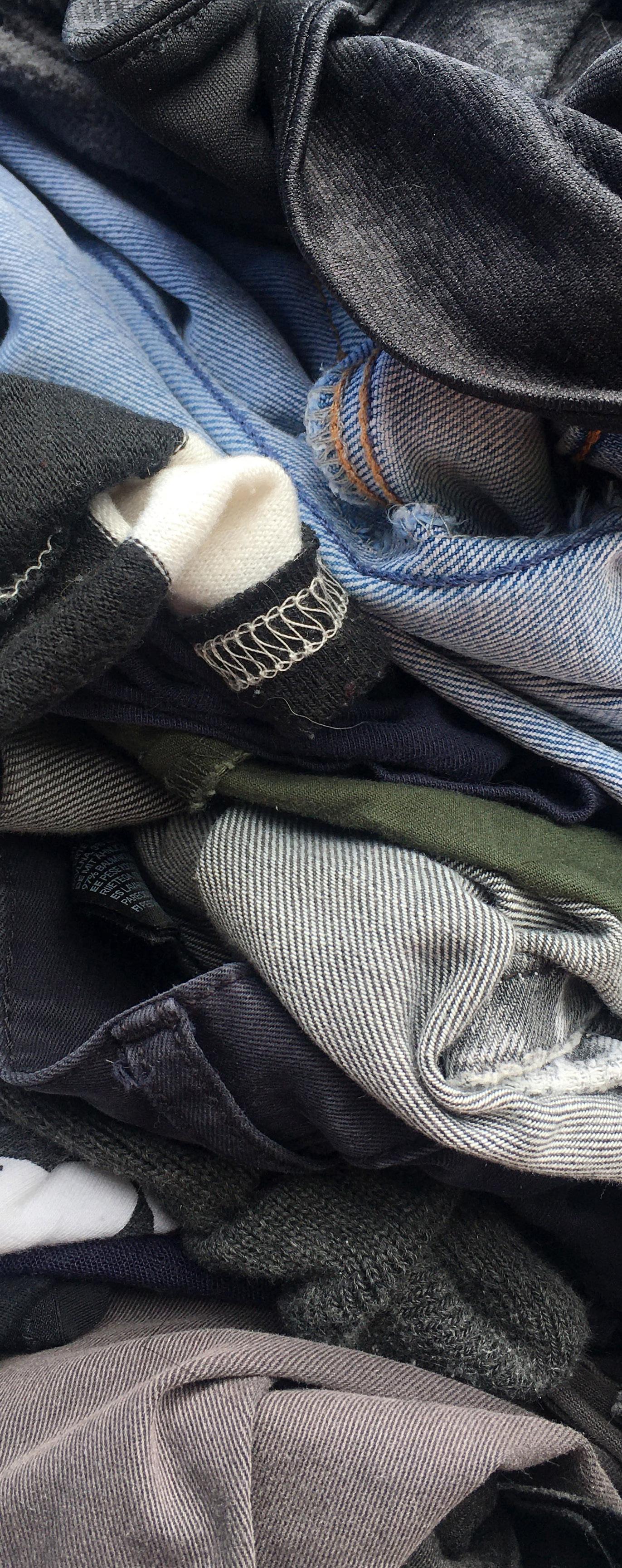
The Sun Daily (Malaysia)42
‘“The good news is that we are seeing a shift in the culture of shopping for clothes. Sustainability is becoming more popular and consumer awareness is growing. Caring for, sharing and repairing our clothes is cool again. Sewing is cool again. Vintage is cooler than ever. Gen Z’s obsession with second-hand is playing a part.” [says Clare Press, presenter of the Wardrobe Crisis podcast]’
South China Morning Post (Hong Kong)43
42 www.thesundaily.my/style-life/thrifting-as-an-alternative-to-fast-fashionYN8719256
43 www.scmp.com/lifestyle/fashion-beauty/article/3143160/can-sustainablefashion-be-affordable-and-should-it-be
Giving items bought second hand as gifts to friends and family is described as trendy, at least in urban U.K. and as long as you follow certain guidelines:
‘If a “vintage” gift was once considered cheap or twee, it’s now an inspired choice – a signal that the person giving it has a finger pressed firmly on the pulse. With this in mind, here are the etiquette guidelines for secondhand giftgiving this Christmas.‘
The Guardian (United Kingdom)44
With increasing consumer interest in second hand and re-commerce formats45, the news agency Reuters describes the market as consolidating. At the same time, major retail players as well as niche designer brands have gotten onboard:
‘Second-hand clothing firms are fighting to snap up smaller rivals and lock in investment as demand for thriftwear booms’
Reuters46
‘Natalie Wills, Director of Marketing at Zalando, says “Pre-Owned Drama-free” marks the next step of Zalando’s Pre-Owned offering. With the campaign we want to showcase how Zalando Pre-Owned combines the curiosity and uniqueness of fashion shopping, alongside more sustainable practices.’
‘Similarly, brands like LXR, second-hand designer bags and accessories online retailer, were founded to support win-win scenarios where there are both consumer and environmental wins.’

National Post (Canada) 48
44 www.theguardian.com/lifeandstyle/2021/nov/29/preloved-and-perfect-the-seven-essential-rules-for-secondhand-presents
45 See our report in Swedish from 2020 for more examples of re-commerce formats. (“Trendupdate – hållbar konsumtion & livsstilar”, Kairos Future & Science Park Borås, 2020.)
46 www.reuters.com/business/retail-consumer/second-none-fashion-resalers-bulk-up-capitalize-booming-sales-2021-10-28
47 www.iltempo.it/adnkronos/2021/09/15/news/zalando-celebrates-one-year-of-drama-free-pre-owned-fashion-with-adedicated-campaign-to-launch-iconic-celebrity-styles--28681245/
A contrasting form of second hand transactions is taking place directly between consumers swapping products with each other – sometimes in the form of barter trade, sometimes as giveaways. The products swapped are typically garments, but similar formats can for example also be seen for plants.
‘As the saying goes, someone‘s trash could be another person‘s treasure. This festive season we‘re calling on the UK to consider whether they can swap the bin for re-commerce, and list the things they don‘t want for free so that someone else can enjoy their pre-loved item’
Plymouth Herald (U.K.)49
‘Plant swapping : Indonesia’s latest trend promotes sharing and caring. As a natural extension of gardening as a new hobby during the pandemic, plant swap communities are blooming on social media, with #bartertanaman (plant barter), #plantlover and #bartertanamanhias (decorative plant barter) just a few of the trending hashtags reaching hundreds of posts each day.’
The Jakarta Post (Indonesia)50
For frugal shoppers looking for a fair barter rather than giving something away, apps can help figuring out whether products about to be swapped are of equal value:
‘Wine lovers will sometimes trade bottles with friends and acquaintances. But figuring out a fair swap can be a little tricky, so naturally there is an app that can help.’
The Daily Press (Canada)51
48 https://nationalpost.com/shopping-essentials/second-hand-designer-retailers-that-are-eco-and-budget-conscious
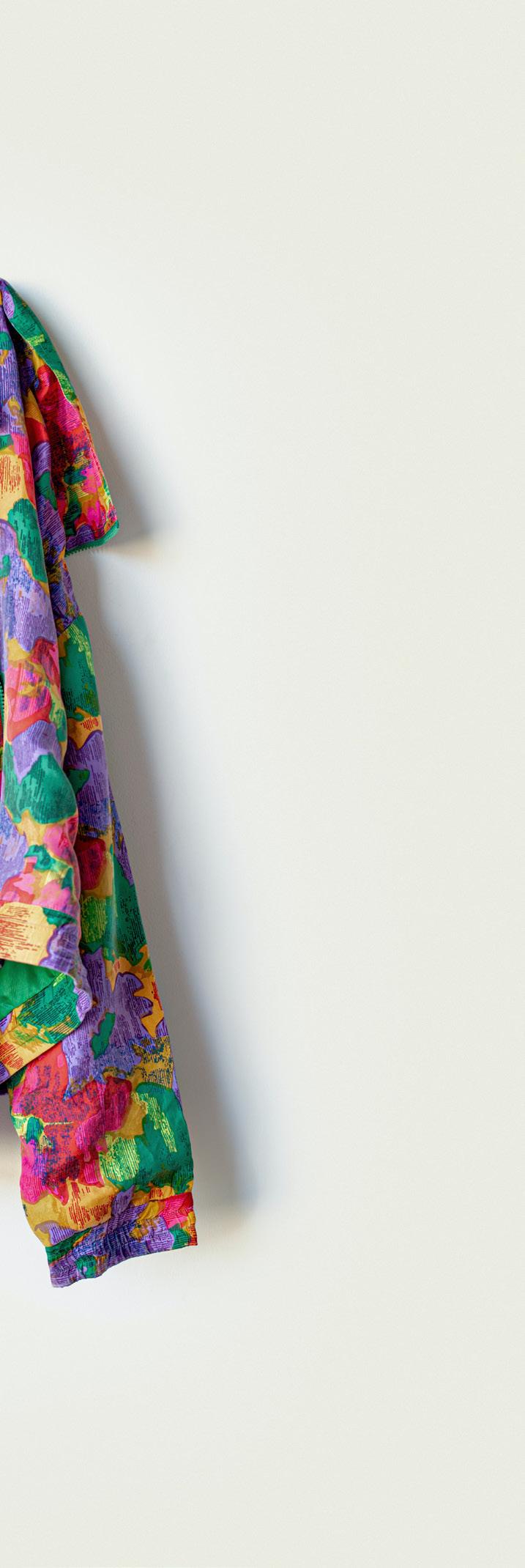
49 www.plymouthherald.co.uk/whats-on/shopping/cop26-failed-make-people-plan-6293223
50 www.thejakartapost.com/paper/2021/07/27/plant-swapping-indonesias-latest-trend-promotes-sharing-and-caring.html
51 www.timminspress.com/financial-post-magazine/grape-expectations-wine-is-starting-to-attract-big-money-among-investors
For a large share of the world’s consumers, applying a frugal mindset is not a choice. During an interview discussion on consumer behaviour in South Africa, Mikhail Jordaan describes two contrasting mindsets that he sees among consumers there. He first points out that the possibility to use something over a long time, repair it when it is broken, and pass it on when you do not need it anymore are aspects that many consumers consider, out of necessity due to scarce resources, whenever they buy for example a garment. However, Jordaan also observes a contrasting mindset among well-off consumers who are seeking products perceived as displaying a ‘green premium’, which confers status and lifestyle cues. These two mindsets, he reflects, can be seen as inverted awareness and consumer pyramids, where the consumers at the bottom end of the consumer pyramid (for whom scarcity is a hard reality) are simultaneously at the top end when it comes to awareness of sustainability.
The scarcity-based mindset described by Jordaan is often necessary due to poverty. Perhaps we should remind ourselves that many of the world’s poor would need the chance to increase their consumption to make it sustainable – something that has been emphasised by the Hot or Cool Institute.52 Nonetheless, the scarcity mindset might serve as a model also for more well-off consumers around the world, as more and more people realise that we are collectively inhabiting a world of scarce resources. Based on this idea, Figure 16 illustrates a hypothesis about three basic mindsets related to sustainability and consumption:
We, through scarcity, are engaged with hyper-localised food products. We are engaged with an understanding of repair, replacement, re-use of garments, of building materials, of all these kinds of things. They are part of the everyday construction of lived experiences. These are all sustainable practices, but because they are of a lower economic tier they are not seen as sustainable.’
52 https://hotorcool.org/wp-content/uploads/2021/10/Hot_or_Cool_1_5_lifestyles_FULL_REPORT_AND_ANNEX_B.pdf
53 www.thesun.co.uk/news/16944747/covid-has-changed-christmas-traditions-forever/

‘A consumer in the South-African or African context engages with the concept of sustainability far earlier in their consumer journey than a European consumer, who only selfactualises about an awareness of impact later on.
Mikhail Jordaan
Privileged sustainable mindset
‘Green premium’ as lifestyle and status indicator for consumers willing to pay extra
By a reformulation of ‘the good life’ as a starting point, can a more restrained consumption give higher status and become the new ‘green premium’?
Can we return to a scarcity-based sustainable mindset by realising its necessity ?
Light-hearted unsustainable mindset
‘Throw away’ mentality among consumers for whom basic consumer goods are readily accessible
Sustainable mindset by necessity
Circular knowledge and practices that have evolved during generations of scarcity (in personal finances, in societies, and now also at a planet level)
For people with this mindset, it most importantly needs to be easy to do the right thing. You shouldn’t need to read up on production conditions, circular design, etc.
Consumers who have this frugal mindset because of poverty may need economic groth of redistribution to be able to increase their consumption. (A challenge may be not to abandon frugality when getting out of poverty.)
What would it take for consumers who have more than enough resources to cover their basic needs to broadly shift to a scarcity mindset although their private economy does not force them to do so? One suggestion, which a majority of this study’s interviewees have hinted at, is that we need to start from reformulating what is really valuable and what it means to live a good life. For some consumers, the pandemic has already sparked such a move.
‘COVID-19 has meant that we’ve had to adapt, and in doing so, people have swapped materialistic traditions for ones that bring joy to their children.’
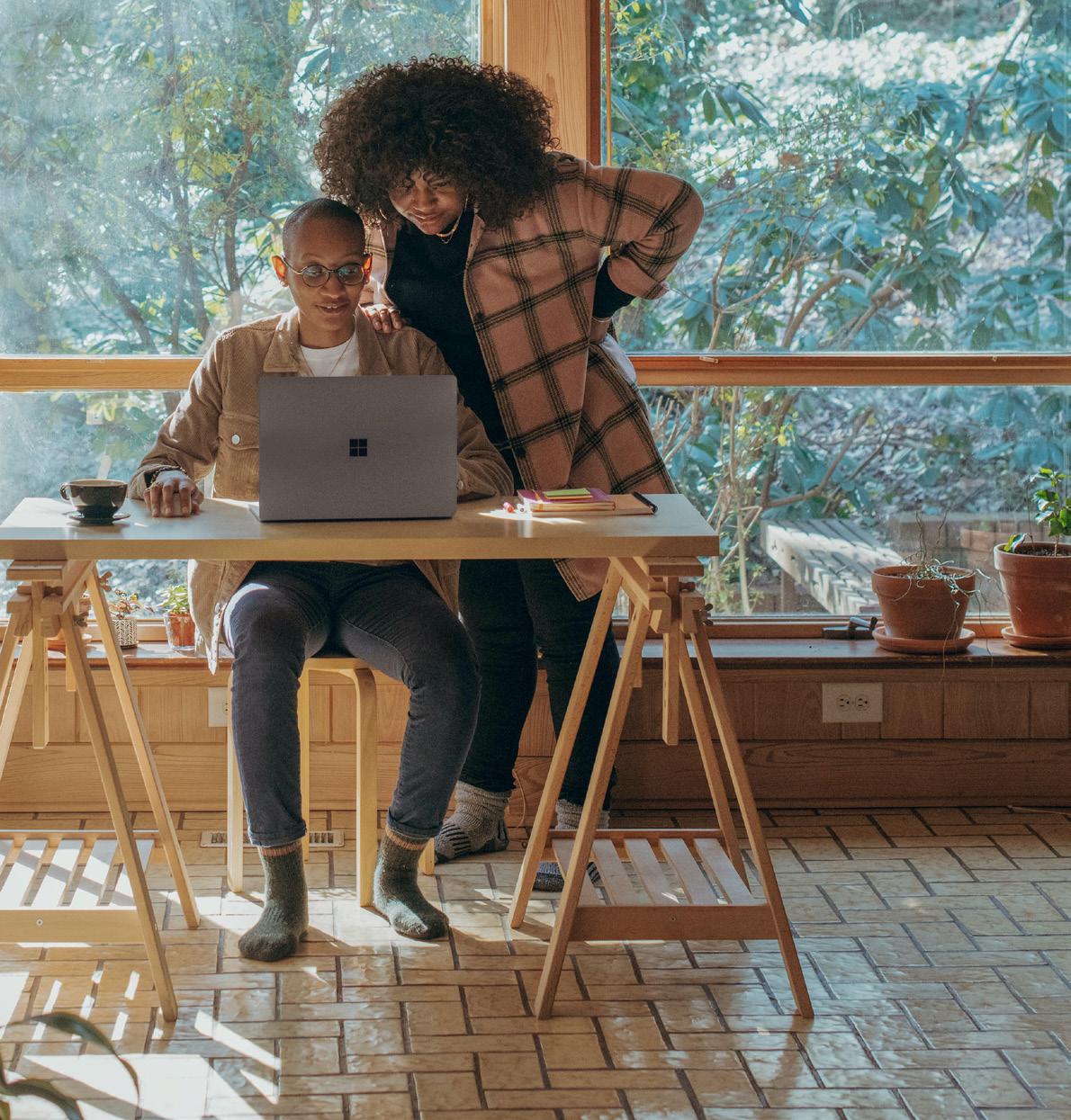
The Sun (U.K.)53
With a reassessment of the good life as a starting point, could a more restrained consumption gain higher status, and become more attractive than showcasing ‘green premium’ products for those with a ‘green seeker’ mindset? For those who neither need to apply a scarcity mindset out of necessity, nor belong to a green seeker culture, and today follow non-frugal consumption patterns without reflecting on it, it may be more important that it becomes easy to do the right thing without thinking too much about it. (See Section 2.2.3.) More thoughts on how different types of consumers may be helped in adopting more sustainable consumption patterns can be found in Chapter 4.
Many discussions about sustainability and consumption in one way or another refer to something local. This can be shopping at local stores or choosing locally produced goods, but also following local tradition or getting engaged in one’s local community. While there are many different notions of how sustainability is connected to what is local, a striking observation is that the local appears to almost universally be seen as something positive.
‘The consumption of vegetables from your own garden, as well as local products, is a new global trend, also growing in Latin America, among consumers who understand food as a source of flavour, health, sustainability, biodiversity and greater food security – and not only a way to satisfy basic food needs.’
– translated from Spanish
The act of shopping locally is often described as a way of keeping a community alive:
‘By buying local, we are keeping money in the local economy, supporting our neighbours, and avoiding the hassle of jostling with crowds in the city centre. At a time when we are more conscious of the need to reduce our carbon footprint, shopping local is good for the environment as well as the economy.’
Several of the narratives around the local relate to a sense of being rooted in one’s local environment. In some cases, this is about staying connected with local traditions and styles:
‘So, in order to champion sustainability in fashion, designers and entrepreneurs must not look at the future, but take a glimpse of our past dressing heritage. That is what Jodinand Aguillon did with his latest creation for his concept Glorious Dias. Dubbed as the Mood Dress, the garment pays homage to the malong and patadyong traditions of the country. “When people talk about ‘circular fashion’ or ‘zero waste,’ as though it’s a new concept, I can’t help but think about the legacy of our very own malong and patadyong,” Jodinand posted.’
The notion that local tradition holds knowledge about how we can live and consume more sustainably can also be seen in the aforementioned example of water-harvesting in Section 3.3.2.
Another form of rootedness relates to forging personal relationships within one’s community by shopping in stores where you know the staff.
‘Small businesses […] are truly the heartbeat of local communities and help bring magical experiences to this time of year. […] Receiving a warm smile and possibly a tasty delight from a local pastry chef while shopping at a small business brings holiday joy to all.’
The Conway Daily Sun (U.S.A.)
New technology, however, allows businesses to build similar relationships with customers, making the boundaries of local-style shopping more fluid. (See also Section 2.1.6.) Direct-toconsumer formats are especially prominent and mentioned in relation to sustainable consumption in East and SouthEast Asia, often referring to entrepreneurial farmers selling fresh produce through social media channels, which allow direct communication between producer and consumer, not wholly unlike in a local setting.
‘Social media is a good platform where urban farmers who want to become agripreneurs can update their customers about the availability of their products and when they can receive them. This also allows them to plan their farm’s products to make sure that all will be sold to prevent them from going to waste.’
Manila Bulletin (Philippines)56
A sustainability narrative related to roots in a more literal sense describes getting together with one’s neighbours to do gardening and small-scale farming together, as an ultimate form of sustainable local production and consumption. The sustainability lies in forging stronger social bonds within a community, as well as appreciating what one produces higher, and strengthening resilience by keeping knowledge about basic food production alive as social ecological memory. (See also Section 2.1.5.) This kind of descriptions of community gardening are especially prevalent in western English-speaking countries.
‘Community gardens allow people who don’t have space to grow food to have their own plot of land or to grow with others. […] Experienced growers […] mentor or run workshops for less experienced members. This is great news for food waste, as it is typical for people who garden and grow their own food to waste less food than people who don’t’.

Canberra Times (Australia)57
When we speak with Kata Nylén, climate psychologist and one of the experts interviewed in this study, she holds forth this sort of community engagement as a key sustainability effort, for two reasons: first, the social bonds that it forges benefit the mental health of individuals. Second, this form of grassroots engagement has great potential as a foundation for a strong civil society that can take on the big political challenges related to sustainable transformation –which she sees as far more important than the consumption choices we make as individuals.
Consumer-facing companies have noted the connection between local community and sustainability, and sometimes use the concept in marketing campaigns as a form of sustainability branding. For example, the supermarket chain Carrefour in Bahrain says:
‘At Carrefour Bahrain, we are committed to giving back to our community […] With a focus on community engagement, each Ramadan, Carrefour provides opportunities for customers to do their part in helping those in need. This year, Carrefour will donate Ramadan boxes to the Royal Humanitarian Foundation. Additionally, customers will be able to buy pre-packed boxes filled with essentials […] to extend support to their communities and donate to those in need’
54 www.diarioeltiempo.com.ar/nota-preferencias-delconsumo-latinoamericano-de-hortalizas-en-tiempos-delcovid19-170634
55 www.independent.ie/regionals/louth/news/christmas-giftguide-to-the-best-offerings-from-the-wee-county-41146820.html
56 https://mb.com.ph/2021/10/13/photographer-and-graphicdesigner-transforms-garage-into-an-urban-hydroponics-garden/
57 www.canberratimes.com.au/story/7466220/reducing-foodwaste-helps-lower-climate-footprint/
58 www.bizbahrain.com/carrefour-to-make-2022-ramadanextra-special/
Another aspect of the local is that supporting local production may contribute to resource security when the world as a whole is increasingly seen as volatile and insecure, in line with the trend towards a stronger emphasis on resilience. (See Section 2.1.5.)
‘Local’ in sustainable consumption discourse may thus refer to community engagement as well as following local tradition and cherishing personal connections to producers and retailers. Even if we narrow our view to look only at the topic of choosing locally produced goods for sustainability reasons, a range of aspects can be seen. Figure 17 gives an overview of seven positive aspects and three potential negative ones.

When discussing local production and consumption with our interviewees, three viewpoints have surfaced. Kata Nylén’s stance that a local focus is necessary for building a strong society, in which citizens are mentally healthy and have power over the big challenges of our time, has already been mentioned. Mikhail Jordaan points to what he sees as the absurdity of today’s production systems, and of discussing so-called ‘near-shoring’ as a special arrangement. ‘It should just be called “manufacturing”’, he says, as he finds it obvious that production in many cases ought to be relocated to where the consumers are. ‘Sustainability should be built into the definition of manufacturing’, he says. ‘We have created a world where circular is secondary. We must design our way into a new one.’
 Ulrika Modéer, UN Assistant Secretary-General and Director of the Bureau of External Relations and Advo-
Ulrika Modéer, UN Assistant Secretary-General and Director of the Bureau of External Relations and Advo-
cacy, UNDP, stresses something different: there is nothing wrong with local production and consumption, but we must not forget to apply an international perspective and uphold global networks. At the moment, she observes, many people seem to be turning inwards in an unfortunate way. Too strong a local focus and dismantling of globally interconnected production systems and trade, she argues, may lead to a world in which we are less mutually dependent on each other than today, which in turn may increase the risk of international conflicts. Following this line of argument, there may be a risk that parts of the efforts for greater resilience at a national level, touted as a sustainability measure and observed in sections 2.1.5 and 3.3.2, may not be so sustainable after all. To help consumers make more informed choices about when to choose something locally produced and when choosing an imported product is more sustainable, Modéer hopes that we will soon see better tools for weighing together different sustainability aspects.
While the term ‘sustainability’ seems to always refer to something positive, it does not always refer to the same thing. This is, to a large extent, due to the multifaceted nature of the concept and the multitude of contexts in which it is used. (See Section 2.1.1 on how the sustainability landscape is becoming increasingly complex.) As we saw in Section 3.3.4 on different views of local consumption, however, there are also fields in which people have very different ideas about which consumption choices are sustainable and which are not. On one side, we see the view that buying something locally produced is always the sustainable choice. On the other side is the argument that international trade contributes to sustainable development – at least when one can see that it is done in a just way, which is for example the idea behind Fair Trade.
A stronger sustainability-related clash of discourses can be seen in relation to textile producers’ sourcing of cotton from Xinjiang in the north-west of China. The topic featured especially heavily in media reporting both in China and in its neighbouring countries during 2021 and forms a distinct theme in the text landscape. Chinese consumers were at the time boycotting fashion brands over their ESG work, against the background of a particular media discourse. According to that discourse, foreign companies were smearing China, using what official media as well as many social media users in the country described as fake concerns over alleged use of forced labour in parts of the cotton production. The dominating narrative in
media outside mainland China, in contrast, focused on the situation of Uyghurs and other ethnic minorities that, according to international human rights organisations such as the Human Rights Watch59 , are facing crimes against humanity.With such descriptions absent or dismissed in the public discourse in China, the country saw a wave of consumers publicly declaring themselves supporters of Xinjiang cotton production and pledging to boycott brands that stopped sourcing cotton from the region. Some demonstrated their stance in international social media, in many cases referring to their national identity as its rationale.‘I’m from China. I support Xinjiang cotton!’as several Twitter users formulated it.
While the Chinese boycott was not typically described as a struggle for sustainability, it was clearly framed as a righteous defence against an unjust attack by foreign forces. Situations of defence are often seen as justifying things that would normally be less justified. In relation to the war in Ukraine, which is ongoing at the time of writing this report, this has led the sustainability concept to creep into a new domain: weapons. Deutsche Welle reported in March 2022 that the arms industry was lobbying for being classified as ‘sustainable’ by EU regulators.60 In Sweden, the business newspaper Dagens Industri the same month noted a trend of shares in companies manufacturing weapons increasingly being accepted by investors looking to do sustainable investments.61 This, arguably, illustrates how sustainability as a concept is being stretched. If we are not careful, do we risk ending up in a situation where everyone is using the term ‘sustainable’ to refer to whatever they find to be good and desirable?
59 www.hrw.org/news/2021/04/19/china-crimes-againsthumanity-xinjiang

60 www.dw.com/en/pointing-to-ukraine-war-arms-lobbypushes-for-sustainable-label/a-61244716
61 www.di.se/nyheter/hallbara-vapenaktier-kommer-infran-kylan/
Reaching a more sustainable use of antibiotics is a challenge that is not at the centre of what we normally speak of as sustainable consumption, but nonetheless a clear example of how the actions of individuals and organisations are affecting many people’s chances of a healthy life. Who is responsible for today’s widespread antibiotics misuse (and the consequential problem of resistant bacteria) is possibly even more difficult to assess than questions about who is responsible for unsustainable consumption of clothes or food, but not too different: is it up to consumers to be more careful? Is it up to governments to regulate sales channels, industrial use, and leakage from production facilities? Or up to retailers and pharmacists who ought to pull the break and inform better about responsible use? The topic of antibiotics in relation to sustainability is most prominent in media texts from South and South-East Asia.
‘In the Western Pacific region, including Vietnam, the media message of the [World Antimicrobial Awareness Week] is “responsible use of antibiotics,” aiming to call on people to take action against antimicrobial resistance as an overarching principle demonstrated by protecting themselves, society and future generations.’
People’s Army Newsletter (Vietnam)
62
Also, apart from misuse and overuse of antibiotics, drugs are a product field in which it is especially tricky for consumers to make informed sustainable choices. Traceability is very limited and there is a lack of labels that may help consumers or patients understand which producers are making an effort to run a sustainable production – and which are, for instance, dumping pharmaceutical waste in rivers by their factories.
The uneven distribution of vaccines against COVID19 during the pandemic is a notable topic in the media material.
‘Africa must pool resources to cushion its people from vaccine nationalism. The key lesson from the pandemic is that African nations must come to rely less on others and more on fellow Africans. A stark contradiction lies at the heart of Africa’s response to Covid19. The continent consumes a quarter of the world’s vaccines across all diseases and given this level of consumption, one would expect African nations to be well experienced at producing, procuring and delivering them to their people.’
It has been mentioned in several of the expert interviews conducted during this study as an example of lacking international solidarity and of how countries in the global north put themselves in the first room in critical situations. Ulrika Modéer at the UNDP brought up the topic as a prime example of a situation in which countries and corporations in the north ought to have been sharing new technology with those in the south. Elaborating on the topic of technology transfer, she also suggested that companies with new technology (not only in the pharmaceutical field) could use voluntary technology sharing with partners in developing countries as part of their sustainability work, and also use this as part of their sustainability branding.
62 https://en.qdnd.vn/social-affairs/news/campaign-launched-to-raise-public-awareness-on-responsible-antibioticuse-535964
63 https://nation.africa/kenya/blogs-opinion/blogs/africamust-pool-resources-to-cushion-its-people-from-vaccinenationalism--3512400
Sustainability challenges in relation to pharmaceuticals is but one topic in the intersection of health and sustainability. Another can be seen in the sections 2.1.5 and 3.3.4, which touch upon the connection between sustainability and mental health. Yet another distinct media topic is that of medical insurances. The topic is found across the developing world as well as in the U.S., which lacks the kind of public healthcare systems that are prevalent in Europe. While we have not studied this topic in-depth, its existence in the topic landscape is interesting as an illustration of how resilience is important at a household level as well as at a national or community level.
News articles from many corners of the world mention the trend of (at least some) consumers trying to eat less meat for sustainability reasons, without necessarily becoming vegetarians or vegans. The habit of ‘flexitarianism’, ‘reducitarianism’, or being vegan/vegetarian ‘by default’ is discussed also in countries that have relatively little tradition of vegetarianism:
’According to a survey by the Argentinean Vegan Union (UVA), the vegan and vegetarian population in Argentina grew from 9% to 12% in 2020. In this situation, the vegetarian barbecue becomes an easy and delicious variation of a typical national dish, adopted to this veggie trend that does not stop growing.’
– translated from Spanish
Also in India, which in contrast has a large share of vegetarians, articles describe a trend of carnivores, who have until recently aimed at eating meat as often as possible, increasingly opting for vegetarian.
’Karan, sous chef at Toast & Tonic, Bengaluru notices growing interest and exploration of plant proteins. He says, “Traditionally India has seen non-vegetarian consumers preferring to eat meat-based dishes when dining out. However, we are now seeing a phenomenon called ‘reducetarianism’, where meat eaters are reducing their consumption of animal meat.”’
The New Indian Express Indulge (India)65
A subtheme that is minor, but has eye-catching differences between geographies, relates to wild game: in parts of North America and Europe, eating wild meat is talked about as a natural and sustainable form of meat consumption. In parts of Asia, the discourse is radically different with eating game, in contrast, described as harming biodiversity as well as human health (the latter in particular after speculations that the SARS-CoV2 virus spread to humans from wild animals).
’It’s unequivocally the single most ecologically friendly food you can eat. A food that actually makes the environment better rather than worse. Seriously. Literally. The food is venison. The catch, of course, is that you have to kill a deer. But stay with me here.’

The Washington Post (U.S.A.)66
‘The locals came out in large numbers and surrendered their airguns, commonly used to hunt birds. The drive is an initiative of the state government to dissuade people from hunting and create awareness on the ill-effects of killing wildlife.’
Arunachal Times (India)67
Lab-grown and plant-based meat are, together with eating insects, frequently mentioned as key solutions to the problems caused by humanity’s meat consumption. Eating insects may be old news in many parts of the world, but is a novel curiosity in other parts.
‘In this context, there are four good reasons why insects could be a basic element in the diet: there is a long tradition of consuming insects, this type of food could help improve our health, products with insects already exist and growing them benefits the environment, they point out.’
Los Angeles Times (U.S.A.)68
– translated from Spanish
‘A local entrepreneur has big plans to take her Mopani worms to kitchens across the world. Inspired by her Tsonga roots, Wendy VeselaNtimbani founded Matomani in November last year. The proudly South African company uses Mopani worms to provide consumers with a sustainable, low-impact, organic, healthy and protein-rich addition to their diets while creating employment within her community.’
Lab-grown and plant-based meat is, however, broadly dominated by reports on new steps taken towards increasingly authentic meat-like products.
‘Though created in a vat, cultured products are indistinguishable from animal products on a cellular level, and as nutritious — without the environmental and moral burdens of raising animals to kill and eat. But to actually succeed, cultured meat must overcome two major obstacles: pricing and consumer doubt.’

Bangkok Post (Thailand)70
64 https://tn.com.ar/sociedad/2021/08/08/como-hacer-el-mejor-asado-vegetariano-a-la-parrilla/
65 www.indulgexpress.com/food/food-bengaluru/2022/jan/07/micro-cuisines-hyper-localingredients-and-plant-based-diets-city-based-chefs-talk-about-thebigge-38249.html
66 www.washingtonpost.com/food/2021/09/23/venison-eco-friendly-hunting/
67 https://arunachaltimes.in/index.php/2021/04/04/ecosystem-is-under-threat-due-to-rampant-hunting-cm/
68 www.latimes.com/espanol/comida/articulo/2021-05-22/insectos-un-plato-cada-vez-mas-apetitoso
69 www.iol.co.za/capetimes/news/mopani-worms-to-beef-up-kitchens-around-the-world-09539650-b062-486e-a633a8c900123b78
70 www.bangkokpost.com/opinion/opinion/2162479/you-eat-meat-from-factory-farms-why-not-a-lab-

How should one think to pursue change in sustainability and sustainable consumption?

The basic rule of change is to focus on your friends. Sustainability is a long journey. You should take it with your friends, those who already share values, and then you can think about how to deal with the skeptics – either you ignore them completely, or you just try to make sure they don't get very upset.
How should you think about these more conservative consumers then?
That depends very much on the storytelling itself. If we say that there is an artisanal sausage that used to exist in a small town and is now making a comeback, then that could be both a new conscious product and a product that appeals to the conservatives in that region. So, it's all about the story: that you should have this conversion for the sake of the world or for the sake of that town. The unique story evokes unique emotions.
Both in this report and across the board, we see that sustainability means different things to different people. At MAX, you have been working on being climate positive, how might others go about?
There is clearly an increasing polarisation between sustainability people the further we go into the change. In a way that's to be expected and it can actually be a good sign that we are leaving the problem phase where it was easier to agree and now, we enter the solution phase where people have increasingly polarized opinions. The political parties are also pretty much in agreement about the problems - it's when they come up with the solutions that things start to heat up.
If being climate-positive would not create some friction, it's probably because it didn't matter. As a jantelag71 Swede and a person who likes to do the right thing and have friends, it's very hard emotionally sometimes when I , or MAX, gets picked on in social media. So far it hasn't been anything major for me, but I feel that even the little comments can be hard sometimes and I would like to shout out “it is not perfect, but it is world leadingly powerful and we are doing it now instead of later”. Friction is however a sign of change. So, I must dare to embrace the friction. And so must all frontrunners.
One of the things we've been working on a lot at MAX is to show what concrete evidence we have of a change in the outcome of the sustainability work, rather than just going on about good intentions and goals. Many organizations say: "we're going to be climate positive by 2040" or something like that, "we're going to reduce our emissions", and that's something that sounds very nice. "Yes, you really have your values in the right place" [one would think]. But we have taken the option of trying to deliver results so we actually can say "You can buy low-carbon burgers from us. It's here now. There it is, in front of you." Communicating sustainability results instead of intentions is something I can highly recommend.
In our report on sustainable consumption from 201972, we introduced a model we called the Sustainability Stairway (in Swedish ‘Hållbarhetstrappan’). It illustrates how consumers differ when it comes to attitudes to and knowledge about sustainability. With the model, the process of becoming a more sustainable consumer can be thought of as a journey up the stairway: from not being interested in sustainability at all at the bottom of the stairway, via (at the first step) adopting particular sustainable practices that do not require major sacrifices, to (at the second step) more thoroughly adjusting one’s life in a sustainable direction.
One year later, we turned to academic research to get a more nuanced understanding of different mechanisms that may help individuals make more sustainable choices and adopt more sustainable behaviours, which we mapped to the different steps.73
Now revisiting the stairway model a second time, we take on the perspective of a consumer-facing business that wants to offer its customers sustainable value propositions. Companies may have different reasons for such an aim. One possible motivation is, of course, the necessity for sustainable transformation in itself; another lies in the business opportunities for those who can offer the best solutions as the world transforms. This chapter does not aim to describe what a sustainable value proposition should look like for any particular business, but rather aims to point readers in the direction of tools that a company can use to find that out for itself.
The bottom of the stairs: Consumers who lack motivation for sustainable consumption
Step 1: Consumers sustainable lifestyle
72 “Möt framtidens hållbara konsumenter – En netnografisk studie av svenska mikrokulturer med fokus på hållbarhet”, Kairos Future & Science Park Borås, 2019.
73 “Trendupdate – hållbar konsumtion & livsstilar”, Kairos Future & Science Park Borås, 2020.
74 Fischer et al (2021)
75 https://circularhub.se/circular-business-model-canvas/
Figure 18
The Sustainability Stairway in the 2019 report.
Första steget “Var ska jag börja?” Triggers – Information – Inspiration – Status & gruppåverkan
Triggers – Community – Inspiration – Mätbarhet – Skam & tabun
Klimatsmarthet som livsstil Hållbara val där det passar in i det liv man redan lever utan större uppoffringar. T.ex.:
Figure 20
Målinriktad hållbarhet Ett liv anpassat för att hålla nere klimatavtrycket. Fokus dels på att välja bort beteenden som blivit tabu ens community, dels på förändringar som ger tydlig effekt. Förståelse för att komplexa samband avgör hur hållbart något är
We are also taking the chance to add a third step to the stairway. (More on that below.) This chapter contains brief descriptions of the stairway’s steps, together with new observations from academic research.
Ge feedback så att individer märker när de handlat hållbart Låt individer tävla mot sig själva eller andra Låt grupper tävla mot andra grupper Självförstärkande dynamik inom grupper som antar en hållbar identitet Undvik ”måste” och explicit skuldbeläggande
belöning… …eller som kan sprida sig inom en grupp
Undvik att fostra beteenden som är avhängiga incitament Undvik att trycka hårt på hållbara varor som billiga
Passa på att promota nya vanor när människor ändå ställer om sina liv egen) när de ska göra ett val
Få människor att tänka på framtiden (gärna sin Undivik att skapa slacktivism
change to be highly relevant for the stairway model’s step 2 and 3, respectively, while this report as a whole can be read as an attempt to reflect on discourses about sustainable consumption.
One thing to note before we get started: working with the Sustainability Stairway can in no way replace working with other aspects of one’s business model for improving its sustainability. If a product is presented as sustainable although it’s production is not, then we are talking about outright ‘greenwashing’, which customers will likely see through. One way of evaluating a business model as a whole through a sustainability lens (to avoid problems such as this) is to use the Circular Business Model Canvas.
A more difficult question may be whether the value proposition one develops risks contributing to overconsumption. If what I offer, for example, contributes to products being used longer, or helps consumers reduce consumption of water or energy – or if it is bought instead of a less sustainable alternative – then that is a good step in a sustainable direction. On the other hand, an attractive (and therefore successful) value proposition risks creating a demand that wasn’t there in the first place. As almost all consumption to varying degrees comes with external costs, such as environmental damage, triggering more consumption by consumers whose needs are already fulfilled is arguably not sustainable. A challenge here is that we are very used to thinking that if something is good, then more of it must be even better – but, in terms of sustainability, that is far from always the case. A useful question to ask oneself after formulating a value proposition can therefore be ‘does this risk contributing to overconsumption’?
Several pitfalls became visible during the interviews we conducted ahead of writing this report. Mikhail Jordaan pointed to how products inconspicuously can borrow an air of sustainability from an activity they are associated with, thus creating artificial points of participation in sustainability which he describes as predatory practices of brands. One of several pitfalls stressed by Kata Nylén is the risk that consumers feel they have been so good by making a sustainable consumption choice that they feel they can allow themselves to make unsustainable choices in other situations – the result being zero or even negative impact when all consumption choices are taken into account. A few more examples of pitfalls are described in the following sections on the stairway’s different steps, as well as in our 2020 report.
There are several options for how to approach consumers for whom sustainability is not a priority. One is to reformulate sustainability in a language that makes a certain customer segment feel at home (for example talking about duty, tradition, or holiness with conservatives who feel alienated by more commonplace sustainability terminology). Another approach is to subtly integrate sustainability aspects when marketing a product or brand that the target group already has high confidence in.
Yet another way to contribute to more sustainable consumption when targeting consumers at the bottom of the stairs is to quietly make production more sustainable, but focus on the quality of the product itself in communication with consumers. Function and affordability are key values; Nath & Agrawal (2022) have found that low functional performance and low willingness to pay are two of the aspects that most negatively influence purchase intentions of sustainable products. When marketing high-end products, high quality and durability should be stressed. Sun et al (2021) observe that such products can be more sustainable than mid-range alternatives thanks to lasting longer, but that this sustainability advantage is seldom taken into account by consumers.
Choice editing is also a relevant tool when targeting consumers at the bottom of the stairway: doing part of the job for one’s customers by removing less sustainable alternatives from the options presented to them.
In the above-mentioned categorisation by Fischer et al (2021) of different aims in sustainability communication, their presentation of aiming at behaviour change is an apt description of what it is all about at this step in the stairway: ‘communication [that] is designed to resonate with individual dispositions and/or appeal to cognitive biases’.
One approach in targeting consumers at this step is to design products (or their packaging) so that consumers can easily use them to signal to others that they have made a sustainable consumption choice. Another approach, observed by Röös et al (2021), is to subtly remind a customer of their identity as a sustainable consumer. An example of this is when online stores make it convenient for customers to filter out products that do not fulfil some sustainability criterion. Yet another way of making sustainable choices more convenient is to reduce the number of decisions by presenting a bundled value proposition (such as a subscription to food ingredients, with which a consumer can decide to go for sustainable options once instead of every time he does grocery shopping).
Appealing to consumers’ cognitive biases can also be done by making a sustainable choice the default option. For example, several experiments (including two described by Saulais et al [2019] and Gravert & Kurz [2019]) have shown that fewer people choose to eat meat when a restaurant’s ‘Dish of the Day’ is vegetarian. This is one form of nudging76, a strategy we looked more closely at in our 2020 report. Another form of nudging of relevance here is designing a product in a way that makes using it in a sustainable way feel natural.
Information targeting consumers at the first step in the stairway should be accessible and, when possible, concrete. Kumar & Yadav (2021) point out that clerks in a shop ought to be knowledgeable about how products have been produced and able to explain to customers why one product is more sustainable than another.
Sustainability labelling is another way to convey information, but to be effective labels need to be easy to understand. Rondoni & Grasso (2021), for example, find that consumers’ understanding of carbon footprint labels increases significantly when these are simplified, such as using traffic-light symbols. One challenge towards simplifying sustainability labelling, pointed out by Ulrika Modéer who was interviewed as part of this study, is that so many different labels are in use and that the organisations behind these tend to see each other as competitors, making coordination difficult. Röös et al (2021) note that labels can also be used by retailers to ensure that the products they offer are sustainable (that is, as a tool for choice editing).
76 While nudging as a strategy has received a lot of attention and also become widely accepted, it has also received critique. Lindahl & Jonell (2020) list a number of concerns: first, it can be difficult to know whether the nudger really has benevolent intentions or is motivated by self-interest. Secondly, data on how efficient nudging is show a lot of variation. Nudging is also highly contextdependent, and successful examples can be difficult to transfer to a different setting. Moreover, nudging risks displacing and forcing out other measures that may be more efficient.
Targeting consumers at this step in the stairway should be in line with self-empowerment as described by Fischer et al: focusing on individual consumers’ contributions to sustainable transition of production and consumption, ‘bringing individuals into active engagement with issues of sustainable consumption’.
This may entail increasing transparency by providing more detailed information and ensuring that systems for traceability are in place. As consumers at the second step are prepared to invest more time and energy in sustainability considerations compared to those at the first step, they do not shy away from more complex considerations. Returning to the suggestion by Sun et al to stress that durable high-end products can be more sustainable than cheaper alternatives, this is something that can be communicated in terms of life-cycle analysis to consumers at step 2.
Bringing consumers into active engagement can also mean providing tools through which they can measure and keep track of their own footprint (for example in terms of CO2 emissions). Such metrics can furthermore be used for gamification, giving consumers the chance to compete against themselves or others in improving their quantified sustainability performance. Gamification does not need to mean competition, though; Guillen et al (2021) note that many smartphone apps for sustainability-related gamification adopt a collaborative approach.
Information need not only be about hard metrics, but can also relate to various more qualitative aspects of sustainability. Guillen et al point to a number of studies showing that virtual reality (VR) can be one useful format for contributing to a deeper understanding of topics related to sustainable consumption.

The conclusion that an additional third step at the top of the Sustainability Stairway was needed was inspired partly by recent academic research, partly by discussions during our interviews. Several interviews revolved around a system perspective in which individuals’ consumption choices, albeit important, are not the whole story of how people engage in sustainability efforts. Roughly speaking, focusing solely on individual consumption choices misses two things. First, consumption is not a purely individual act, but something which we do collectively and which is entangled in how we form social relations. Secondly, individuals may not only be engaged as consumers, but also as citizens and members of civil society. These different roles that we have are often interlinked.
The third step of the stairway, therefore, looks beyond the individual. In line with system change, one of the possible aims of communication around sustainability consumption discussed by Fischer et al, the goal for people at this step is to transform systems of consumption and production, rather than transforming individual behaviour. People at this step are thus not necessarily those who are the most engaged as individual consumers (who may be found at the second step), but those who are the most active in spreading their engagement to others.
Social interaction and inspiring others to join a cause are key here. This can mean, as a consumer, to be an enthusiastic ‘missionary’ for a particular brand that is actively engaged in sustainable transformation. It can also mean adopting a more directly political approach in joining a collective struggle to transform the society as a whole in a sustainable direction – what Kata Nylén warns that a focus on individual consumption choices may push out of our attention.
The two approaches can be represented by two ‘consumer tribes’ we presented in our 2019 report: the Tech Optimists, who focus on sustainability solutions introduced through innovation, and the Young Activists, who focus on the problems (including climate change) and their causes (including overconsumption). Not wholly unlike this distinction, Enthoven & Thelken (2022) describe the different perspectives of social entrepreneurs, who ‘pull consumers into sustainable consumption’, and activists, who ‘push consumers out of unsustainable consumption’. While they might seem to be at odds with one another, the authors stress the synergies possible when entrepreneurs and activists become allies – as activists get attention to problems and entrepreneurs introduce solutions to them. One of the authors’ recommendations is to, as an entrepreneur, use the same language as the activists. Connecting with activists can therefore be a good idea for a company dedicated to sustainability, who itself aims to be a social entrepreneur, even if the activists themselves are not a major customer segment. This may also help recruiting optimistic brand missionaries who believe in one’s sustainability engagement.
What lessons can a business draw from the above? While it is not necessary for a company to communicate with and have offerings for customers at all the steps in the stairway, we do mean that the question of which step it is targeting has considerable implications for its business. This relates to product design as well as communication.
A first step is therefore to figure out which step(s) in the Sustainability Stairway customers are on. The below figure shows three questions which we suggest a company to reflect on for this purpose:
Once the relevant steps are identified, the stairway can be a guide for what one needs to get in place. As an example, when a company knows that target consumers are on step 2, it needs to be able to instil confidence among them that its value proposition is a truly sustainable consumption option. That, in turn, means that systems that allow transparency of production and value chain need to be in place. If a company wants to target a broad mass market, the bottom of the stairs needs to be taken into account, for example by stressing a product’s functional performance.
1. What is the customer’s attitude towards sustainability?
Negative or neutral
Positive or very positiv
2. How much time and entergy is the customer prepared to spend on sustainable transition? Limited time and energy
The bottom of the stairs: Consumers who lack motivation for sustainable consumption
Step 1: Consumers making sustainable lifestyle choices
One situation in which the stairway model can be especially useful is when working in the framework of a business model canvas, such as the Circular Business Model Canvas developed by Science Park Borås.78 The stairway has relevance for the parts of the canvas focused on customer segment, customer relations, channels, and value proposition. Apart from identifying the step in the stairway where a customer segment is located, for which Figure 21 can be used, the stairway can be especially useful when developing or evaluating a value proposition. The Circular Business Hub at Science Park Borås has, in dialogue with Kairos Future, developed four sets of questions that can be useful for testing a value proposition against each of the steps. (Figure 22.) Templates for working with these questions, and the canvas as a whole, can be downloaded from the Circular Hub website.79
A lot of time and energy
3. Does the customer want to engage actively together with others?
Yes
Step 3: Engaged sustainability leaders
Step 2: Consumers with a goal-oriented approach to the sustainability of their individual consumption
78 For an introduction to the Circular Business Model Canvas and how it can be used, please see the Circular Hub website: https://circularhub.se/ 79 https://circularhub.se/
Example at step 3:
does your company offer in terms of
Questions you should be asking yourself to match customers’ different sustainability journeys.
Example: skiwear rental
We have a subreddit where we interact with the most engaged customers about their sustainability habits. Together, we find new ways to spread the information.
The customer is positive
• How do we ensure truly sustainable
• How does the sustainability effect of sustainable
• How do we help customers choices over time?
• How do we improve of customers’ usage?
The customer is positive towards sustainability, limited time and energy
• How de we help customers show others that a sustainable choice?
• How do we make it easier for customers to make choices?
• How do we show customers concrete positive choice in an easily accessible way?
The customer is negative or neutral towards sustainability
• How does the sustainability solution help customers save money?
• How does the sustainability solution contribute to strengthening customers’ self-esteem?
• How does the sustainability solution contribute to other/future values that also leads to sustainability effects?
The customer is positive and has energy for influencing others
• How does the sustainability solution provide customers with arguments to spread a sustainable lifestyle?
• How does the sustainability solution itself help spread and increase sustainability impact among customers?
• How does the sustainability solution help demonstrate the collective sustainability impact of multiple people’s choices?
positive and has energy for their own sustainability ensure that customers can trust that they have made a choice?
sustainability solution itself give feedback about the sustainable choices?
customers understand the effect of their sustainable time?
improve the solution’s sustainability over time with help usage?
sustainability, but has that they have made make sustainable positive effects of their
Example at step 1:
Example at step 2: It is possible to launch our app at any time to see how the environmental impact, of a particular rented jacket, compares to the environmental impac t of a purchased jacket.
We make it easy to show that you care about sustainability. A simple click when booking your skis is all it takes to also rent an exclusive ski jacket with a sustainability label. Your jacket is delivered together with your skis.
Example at the bottom of the stairs:
We offer great value for money when renting a skiing jacket together with your skis, compared to buying a jacket – which you would use just one week per year for five years. Your money can be used better, e.g. contributing to a better future.
1. For the global outlook in Chapter 3, we collected 536,929 articles from English- and Spanish-language news media matching our search criteria (Figure 23). The articles were published between March 2021 and February 2022. They originate from 126 countries and territories, and were collected through a third-party news aggregator platform.
2. We capped the number of articles from the countries with most articles by taking random samples from those.
3. The articles were split into paragraphs.
4. We removed paragraphs that did not contain any of the keywords.
5. The paragraphs were vectorised.
6. Vectors from each language dataset were separately projected in two dimensions, which resulted in preliminary ‘heatmaps’ or ‘text landscapes’.
7. We then removed paragraphs from parts of the text landscape that were deemed not relevant to the study (e.g. because of a clear lack of consumption perspective).
8. Automatic topic detection was conducted, resulting in 100 algorithmically identified thematic c lusters from each language.
9. Paragraphs with strong connection to non-relevant thematic clusters were removed.
10. The remaining articles were once more vectorised and projected in two dimensions.
11. Paragraphs from all parts of the text landscapes generated in step 10 were gone through manually.
12. To quantitatively compare texts from different geographic regions, we divided the represented countries into 7 regional groups. By filtering a text landscape based on region, we could see in which parts of it the regions are especially well represented.
13. We also calculated the degree to which each word is overrepresented among texts from a region compared to in texts from other regions. The most overrepresented meaningful words from each region were then visualised in Figure 14, with font sizes corresponding to degrees of overrepresentation. For Latin America, Spanish-language texts from the region were compared to Spanish-language texts from elsewhere (mainly Spain and the U.S.), with overrepresented words then translated to English. For each of the other regions, English-language texts were compared to English-language texts from elsewhere.
Keywords used in the data collection. We constructed a search criterion requiring that texts only match if they contain both at least one word from the left set related to consumption and at least one word from the right set related to sustainability. Separate searches were made in English and Spanish, respectively.
Enthoven, Margo PM, and Hendrik N. Thelken. "Activists' and social entrepreneurs' approaches towards consumer culture: Providing a protective space for sustainability transitions." Business Strategy and the Environment (2022).
Fischer, Daniel, et al. "Sustainable consumption communication: A review of an emerging field of research." Journal of Cleaner Production 300 (2021): 126880.
Gravert, C., and V. Kurz. "Nudging à la carte: a field experiment on climate-friendly food choice. Behavioural Public Policy, 1–18." (2019).
Guillen M et al. "Gamification of Sustainable Consumption: a systematic literature review." (2021).
Kumar, Sushant, and Rambalak Yadav. "The impact of shopping motivation on sustainable consumption: A study in the context of green apparel." Journal of Cleaner Production 295 (2021): 126239.
Nath, Vishnu, and Rajat Agrawal. "Barriers to consumer adoption of sustainable products–an empirical analysis." Social Responsibility Journal ahead-of-print (2022).
Rondoni, Agnese, and Simona Grasso. "Consumers behaviour towards carbon footprint labels on food: A review of the literature and discussion of industry implications." Journal of Cleaner Production 301 (2021): 127031.
Röös, Elin et al. "Mistra Sustainable Consumption report 1:10" Chalmers university of Technology (2021).
Saulais, Laure, et al. "When are “Dish of the Day” nudges most effective to increase vegetable selection?." Food policy 85 (2019): 15-27.
Sun, Jennifer J. et al. "Buy less, buy luxury: Understanding and overcoming product durability neglect for sustainable consumption." Journal of Marketing 85.3 (2021): 28-43.
• Annegret Affolderbach, artist, cultural futurist and experiential designer & producer
• Mikhail Jordaan, Industrial Innovation Director
• Ulrika Modéer, United Nations Assistant Secretary-General and Director of the Bureau of External Relations and Advocacy, UNDP
• Kata Nylén, psychologist with a focus on organisational psychology and climate psychology
• Kaj Török, Chief Sustainability Officer at MAX Burgers
• Anders Wijkman, former member of the Swedish and European parliaments, honorary president of the Club of Rome
• Anett Aldman, Project Manager
• Erik Bresky, CEO
• Lena-Marie Jensen, Project Manager
• Jonas Larsson, Senior Lecturer and Researcher
• Birgitta Losman, Sustainability Strategist
• Erik Valvring, Innovation Strategist
• Adrian Zethraeus, Project Manager
• Jörgen Jedbratt, Senior Partner: project management
• Andreas Reibring, Future Strategist: research, analysis, writing
• Olivier Rostang, Future Strategist: research, analysis, writing
• Jonathan Mattebo Persson, Creative: design, graphics
This report was commissioned by Science Park Borås and produced by Kairos Future.
Science Park Borås is part of the innovation system in Västra Götaland and works especially with Textiles and Fashion, Social Development and Sustainable Consumption. From an organisational point of view, Science Park Borås belongs to the University of Borås. The innovation environment is a neutral meeting place for industry, public actors, academia, and civil society. It creates opportunities for the commercialisation of products and services in the creative environment of the Textile Fashion Center.
Through the different competences and resources of the various actors involved, ideas are realised, innovations are developed and circular products and services are formed that can then be tested on the market. Science Park Borås takes the Agenda 2030 goals as its starting point and works for positive social development through the circular economy.
Kairos Future is an international consulting and research company that assists companies, organizations and leaders to understand and shape their futures. We work as consultants for strategic futures, providing our clients with trend analysis and scenario planning, strategy and innovation, strategic change and capability development. Our aim is to make complexity actionable. Our vision is a world where everybody puts future first. Founded in 1993, Kairos Future is headquartered in Stockholm and has offices or partners around the world.
